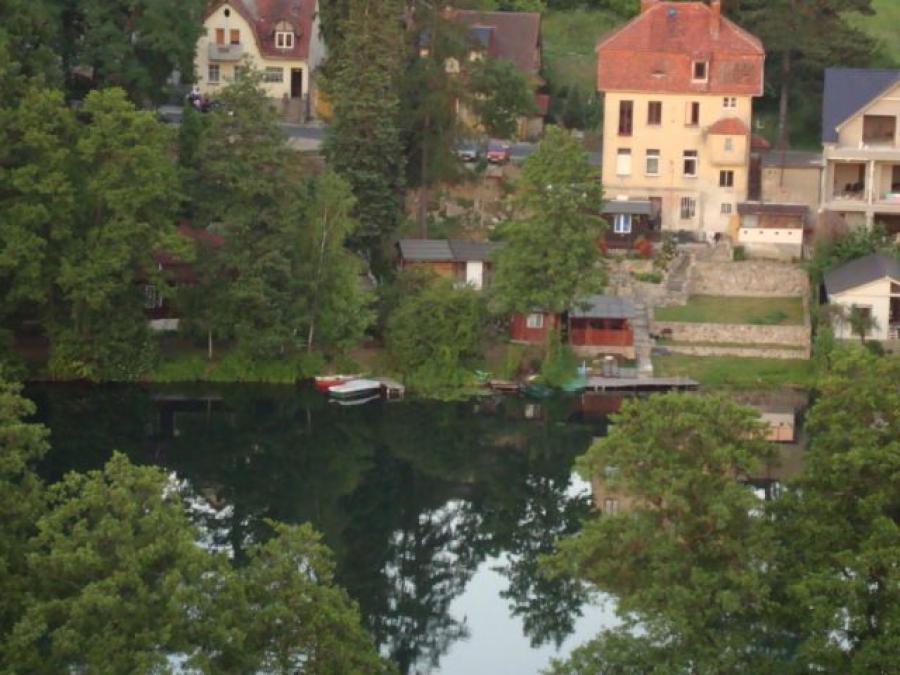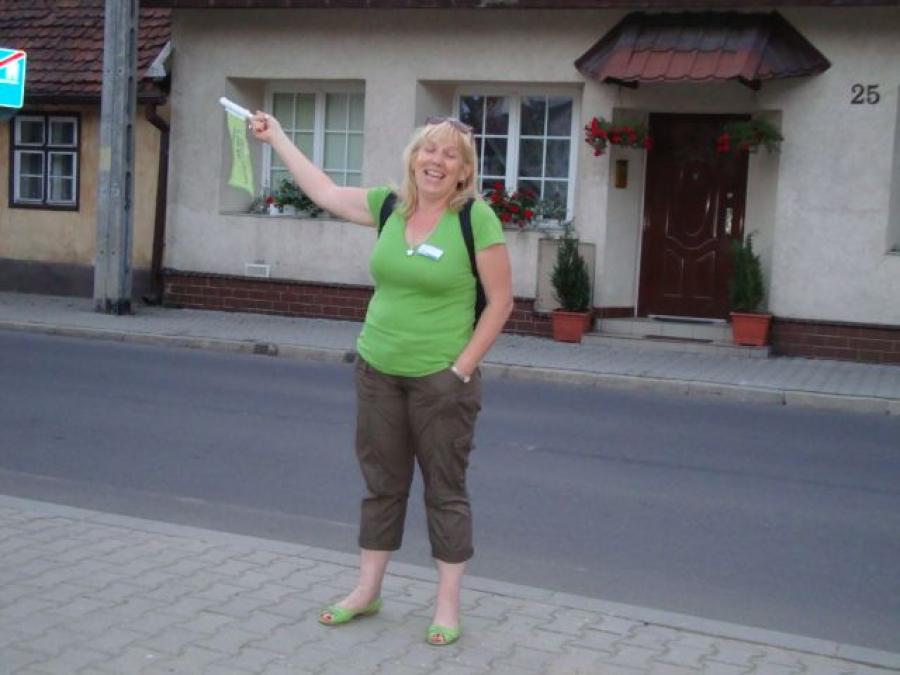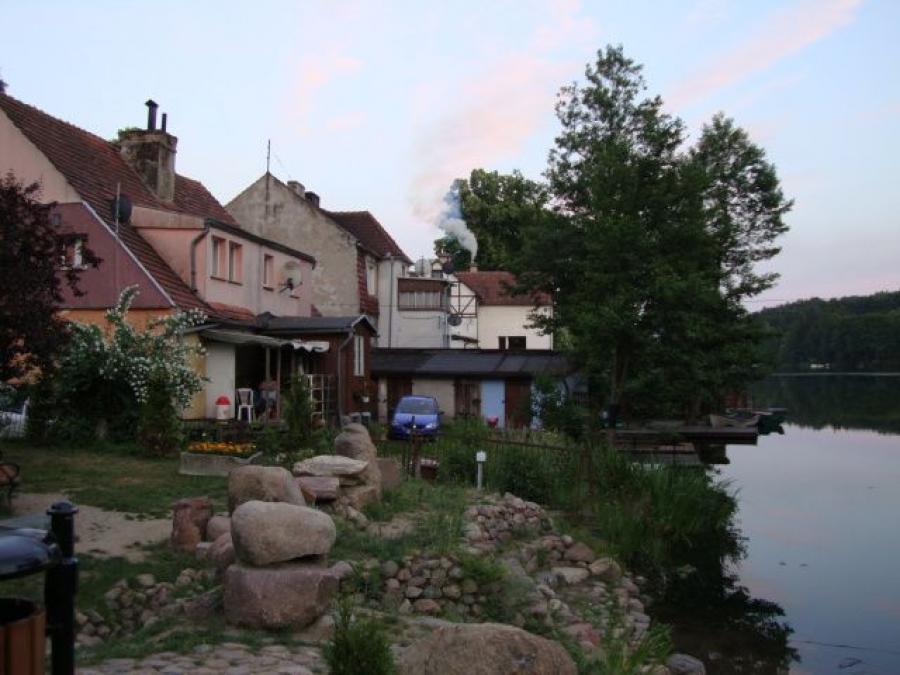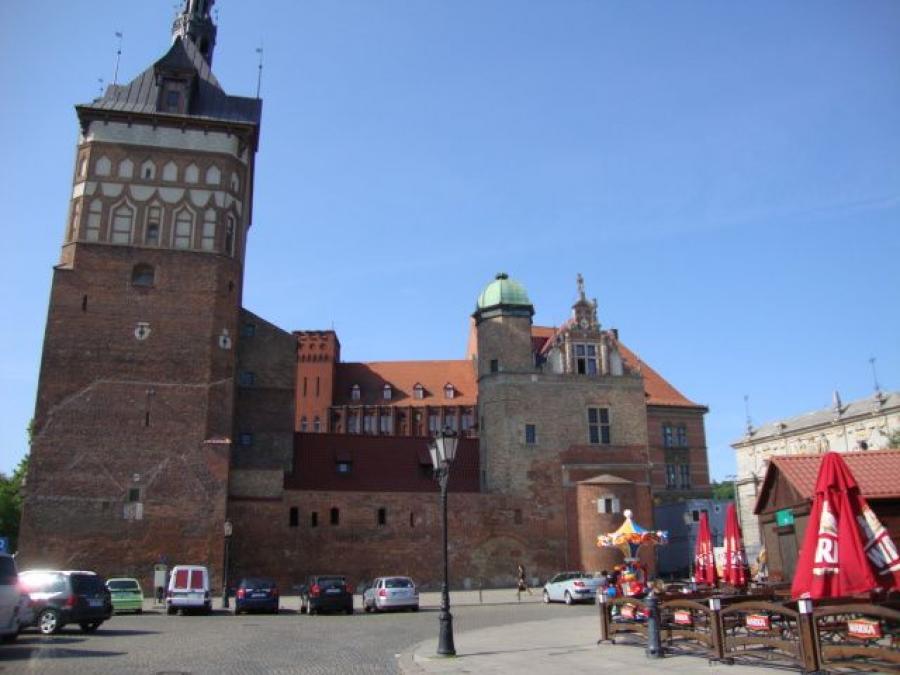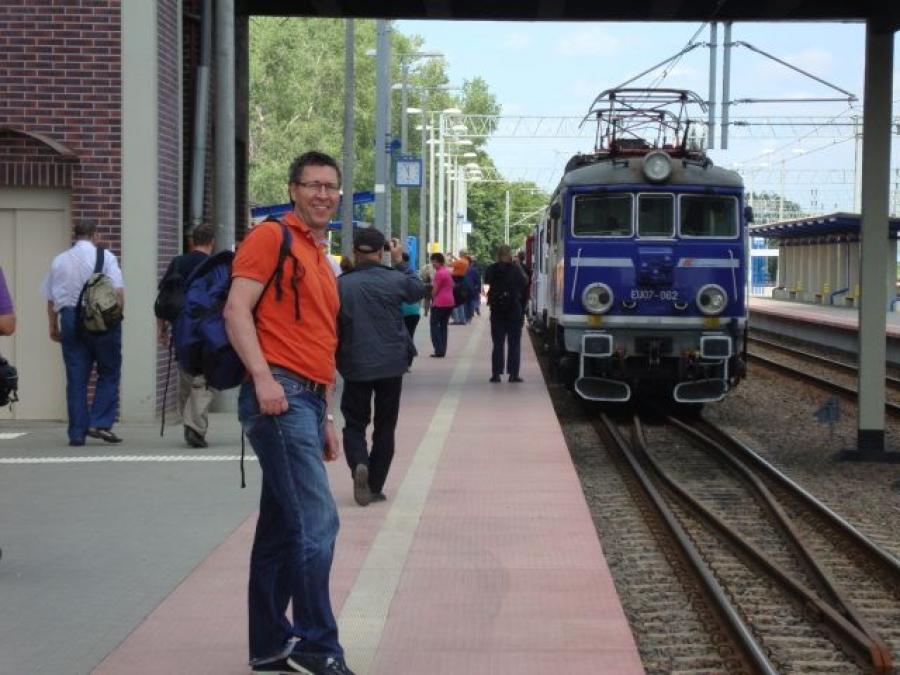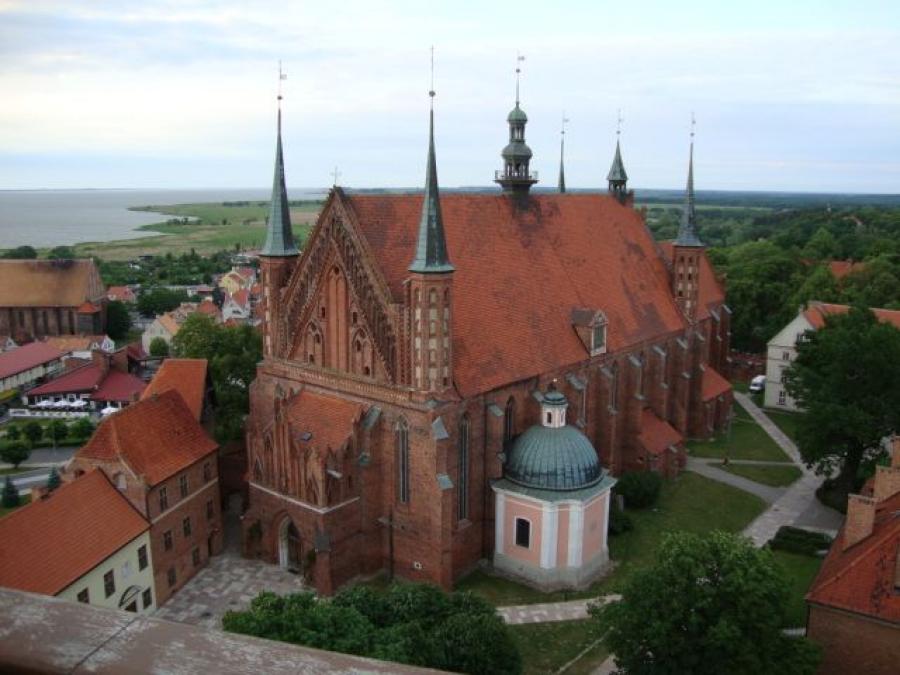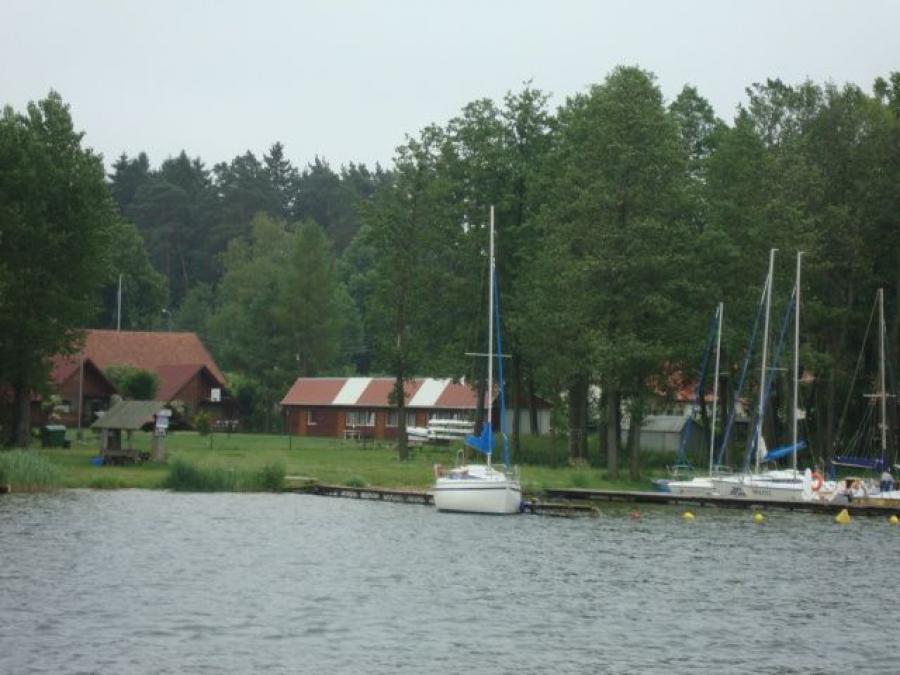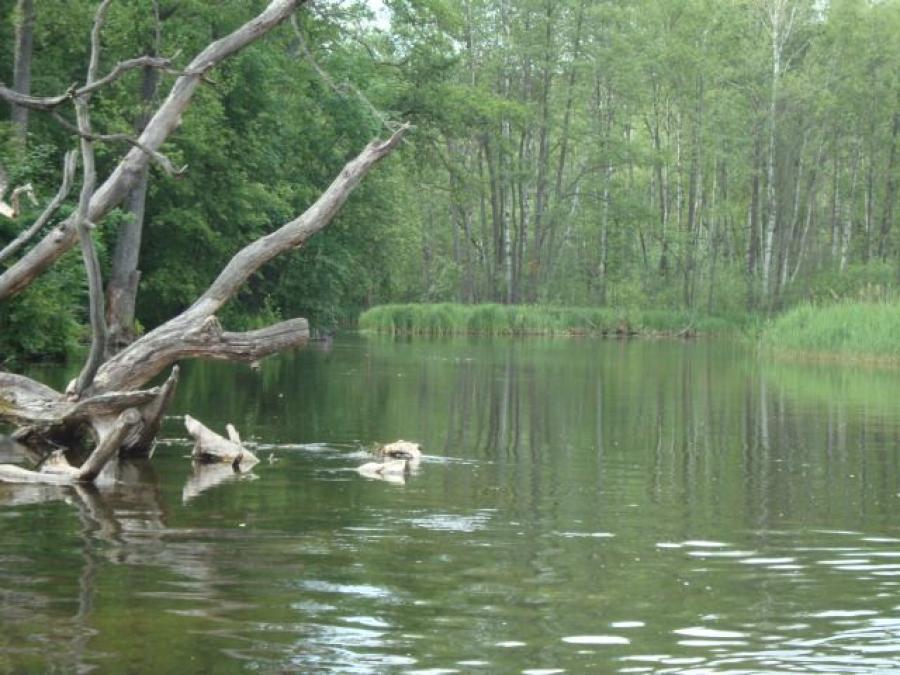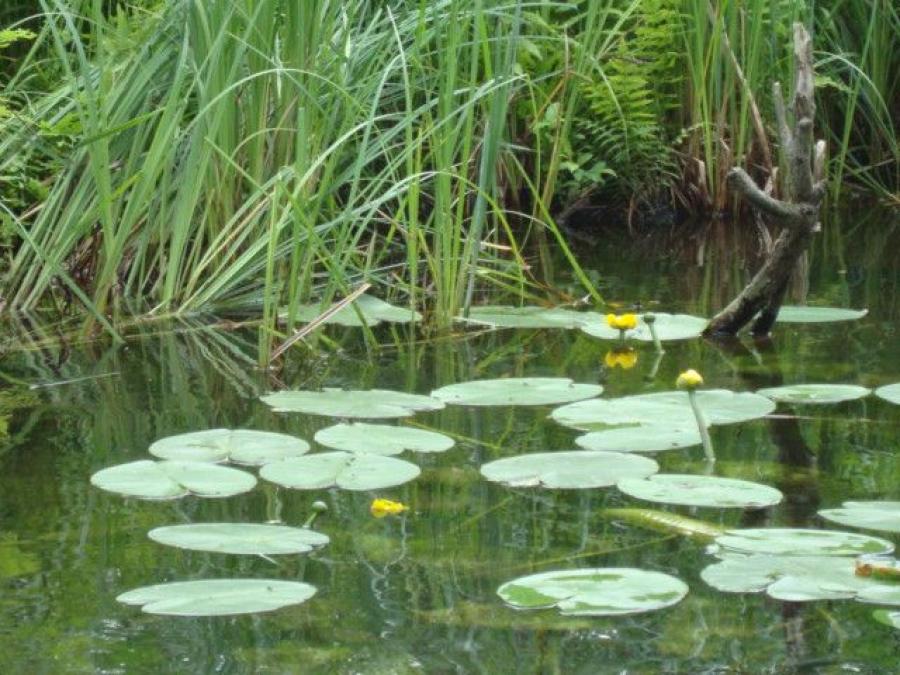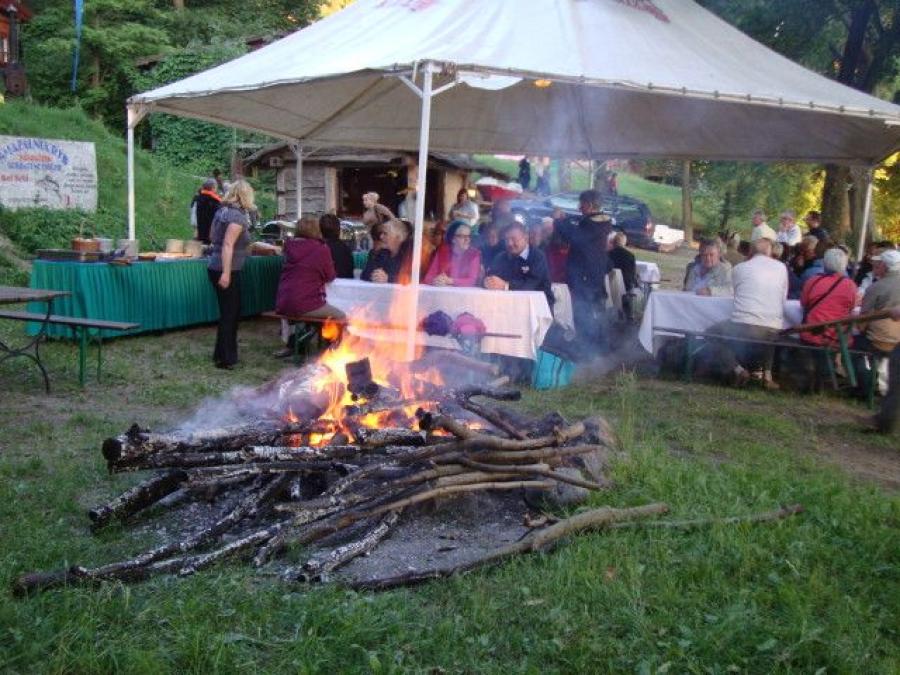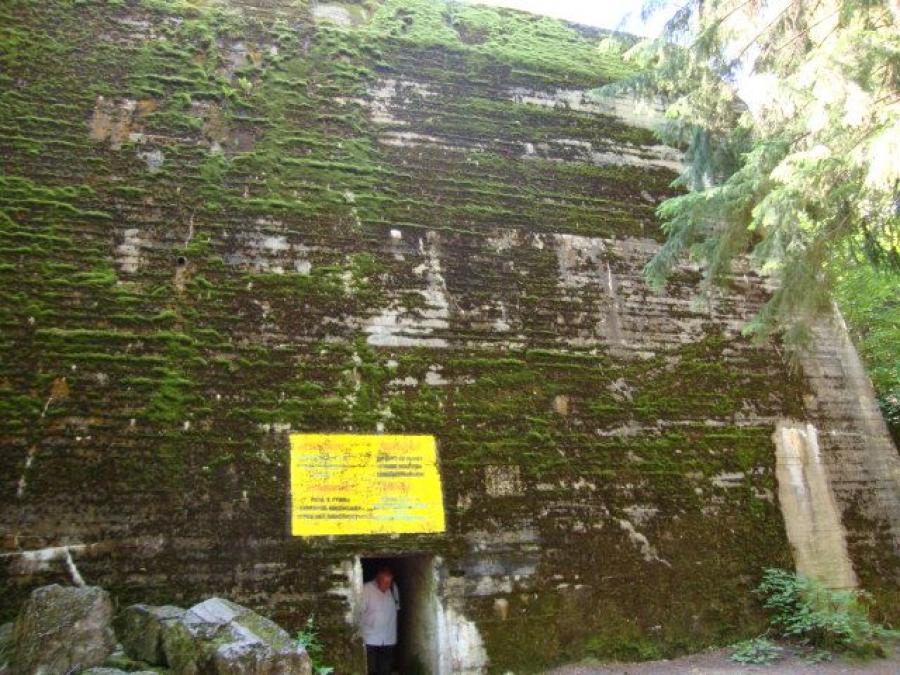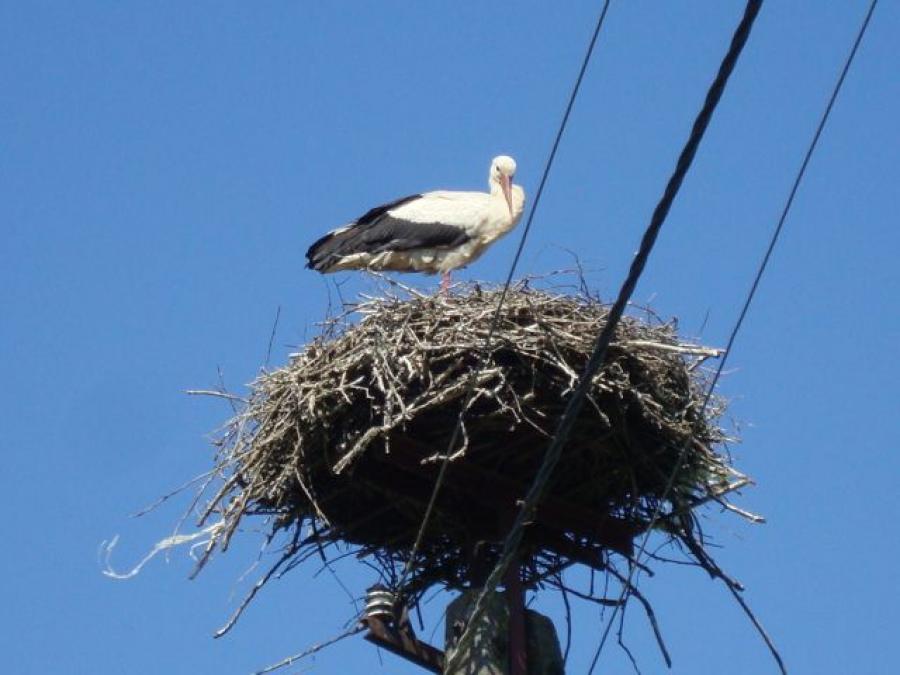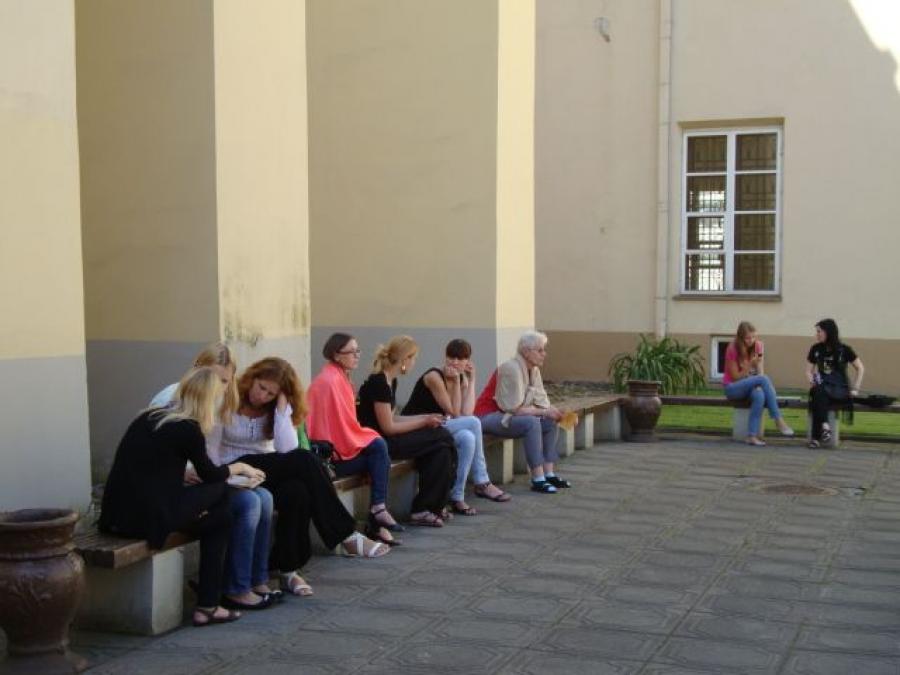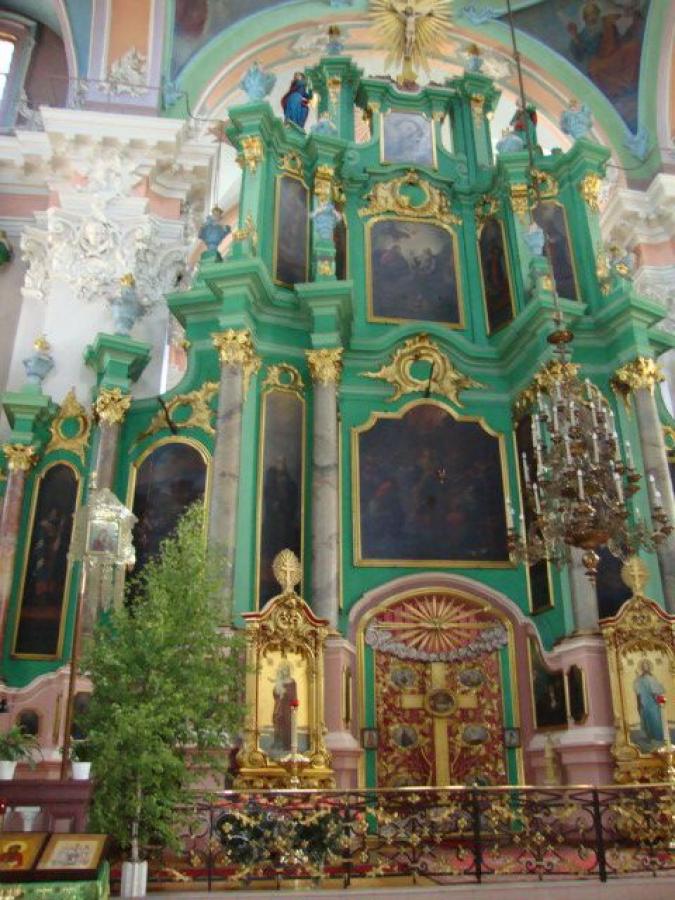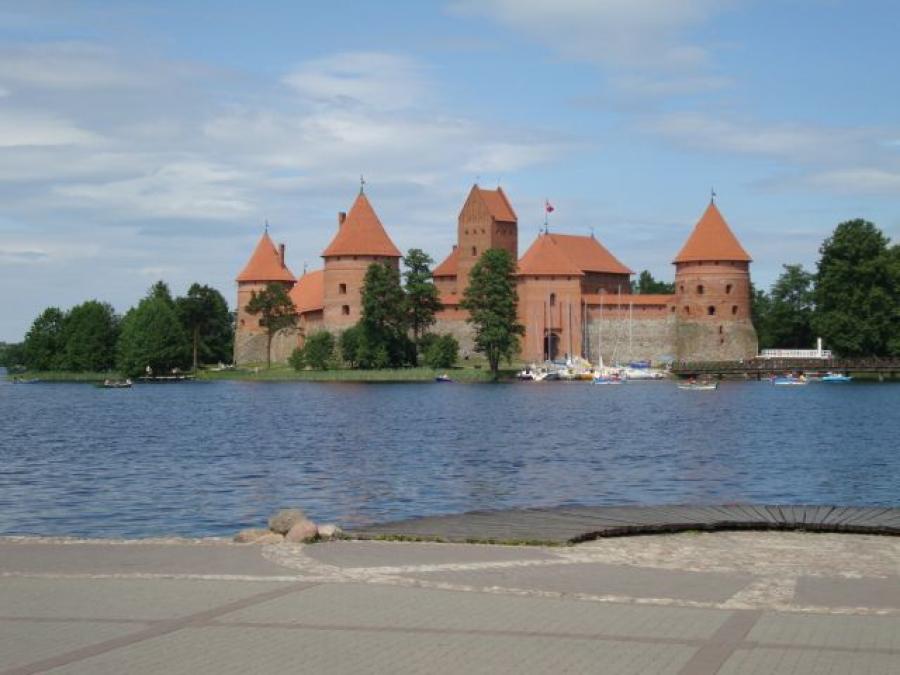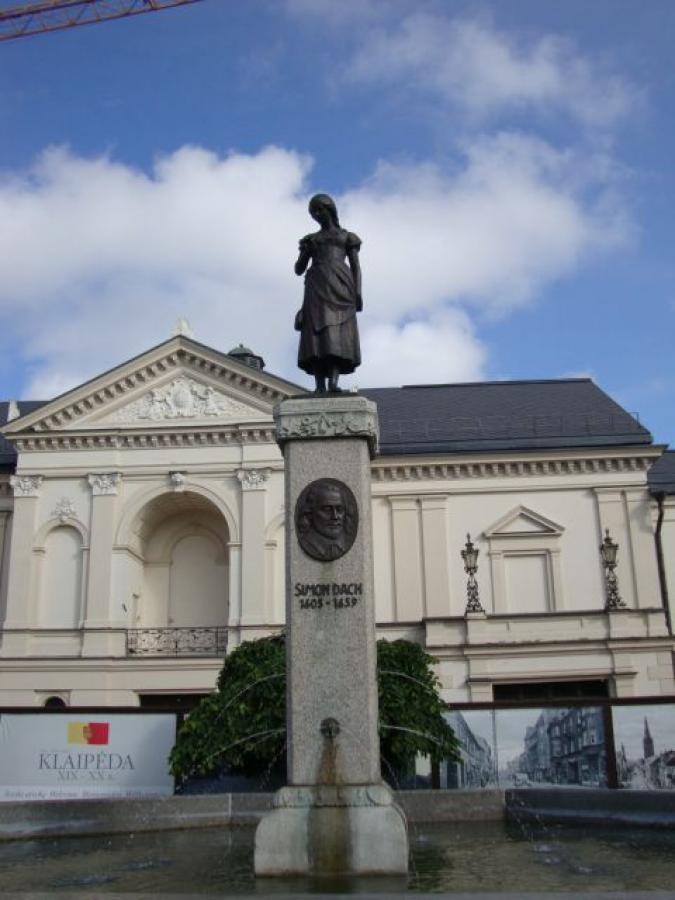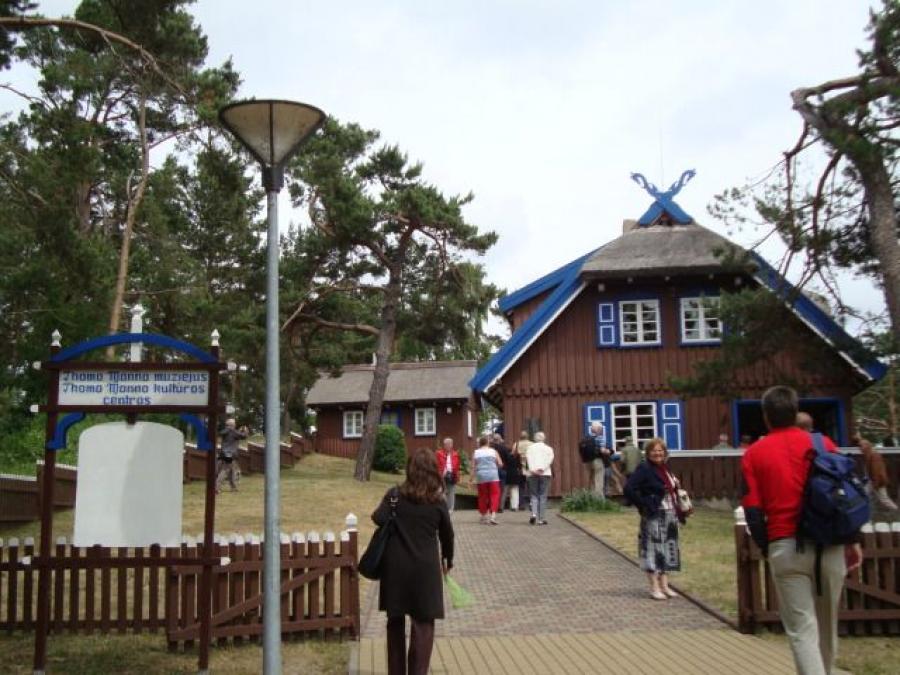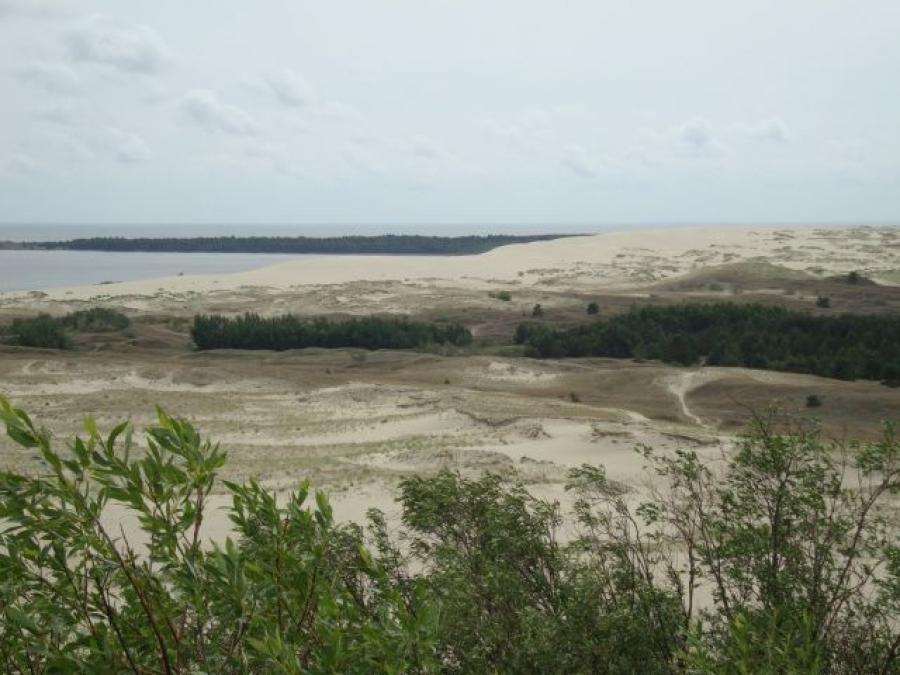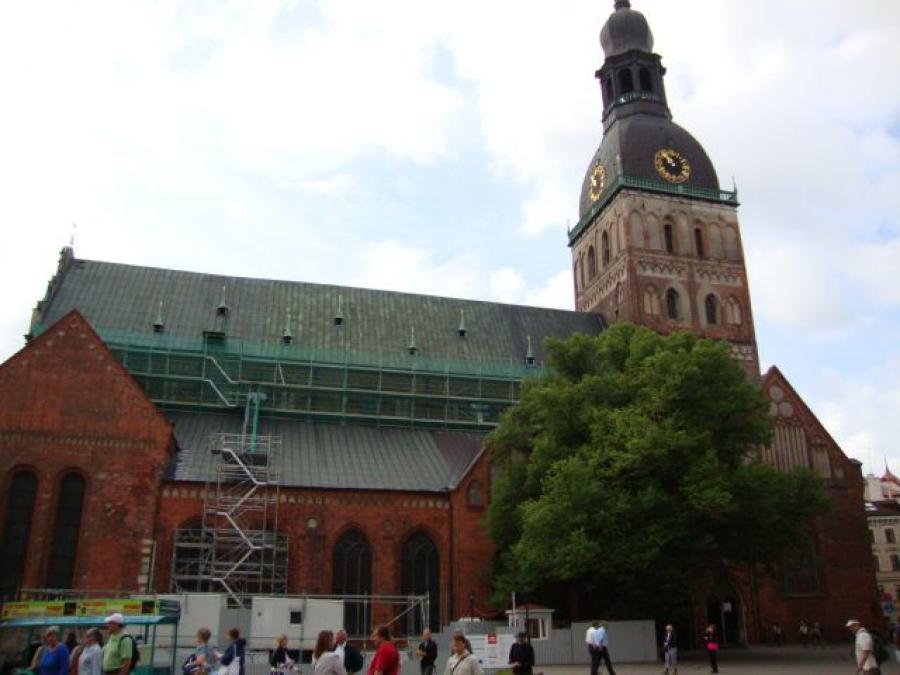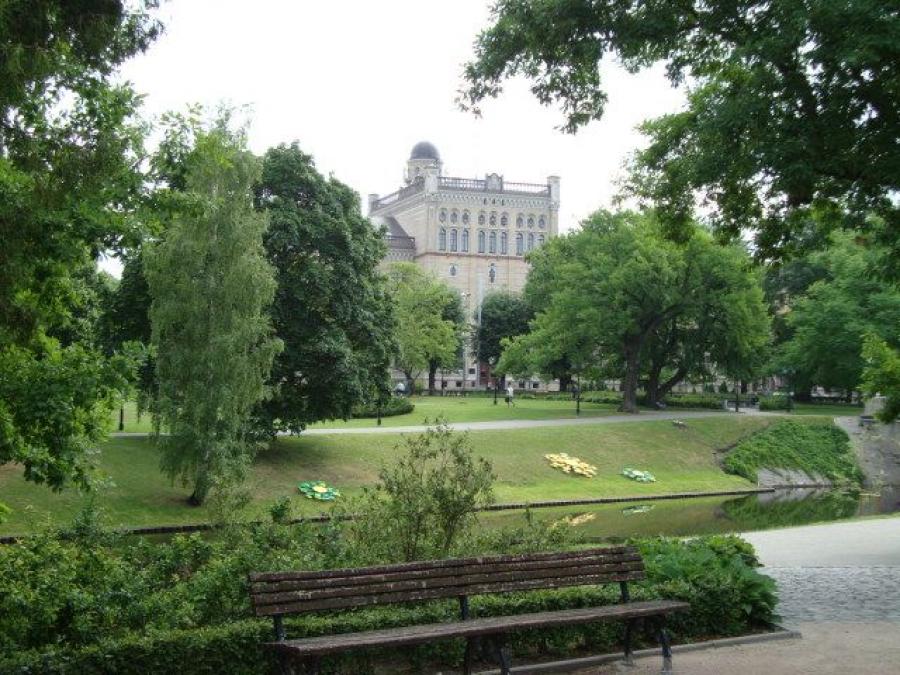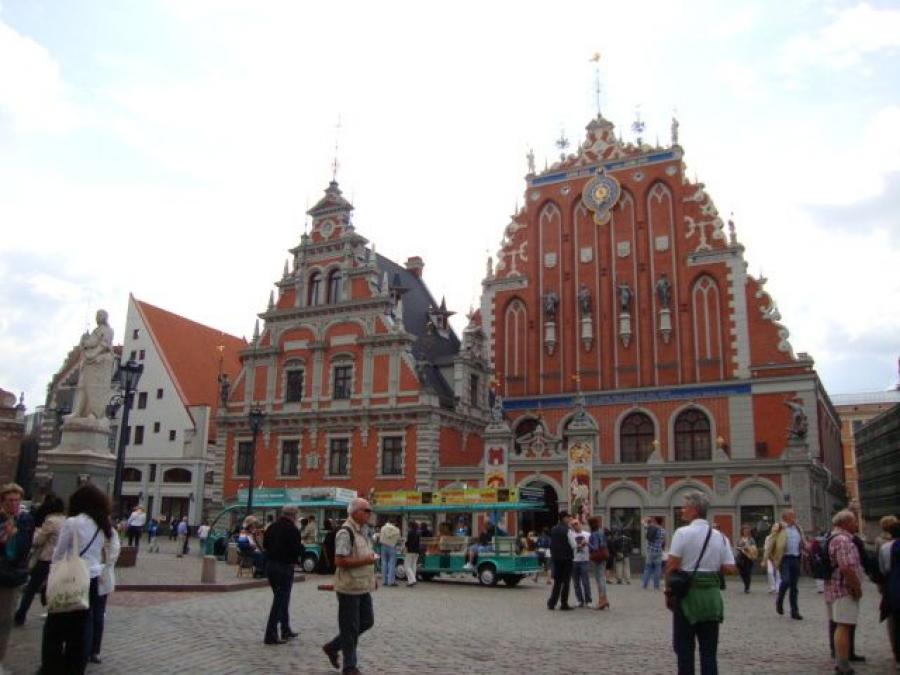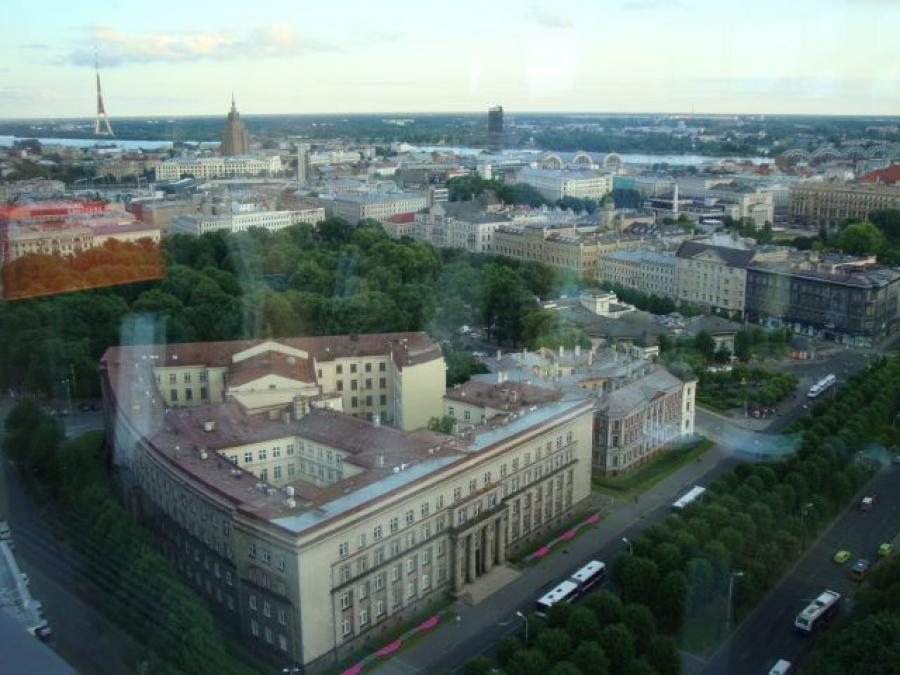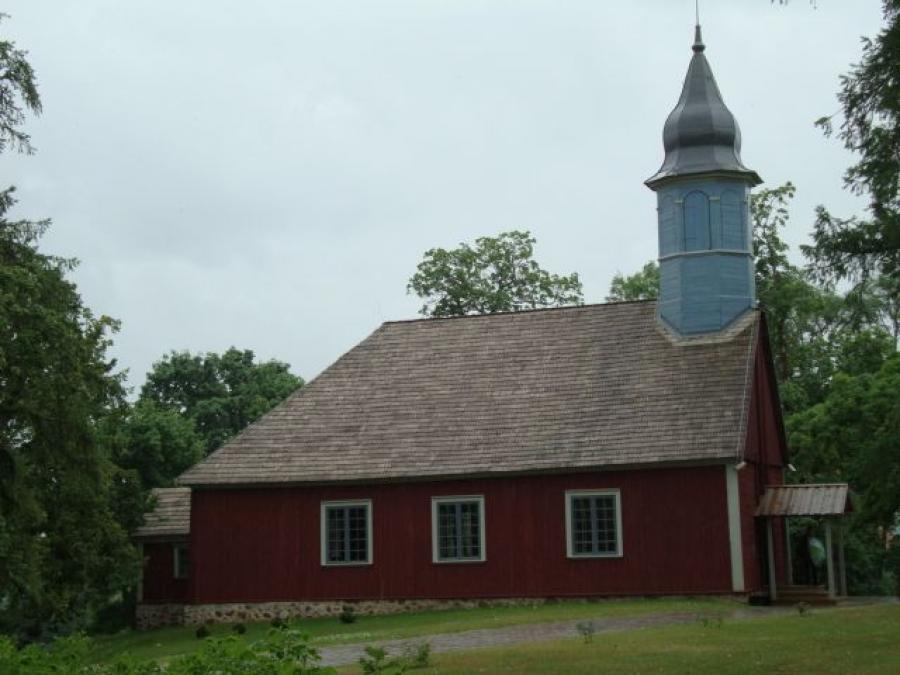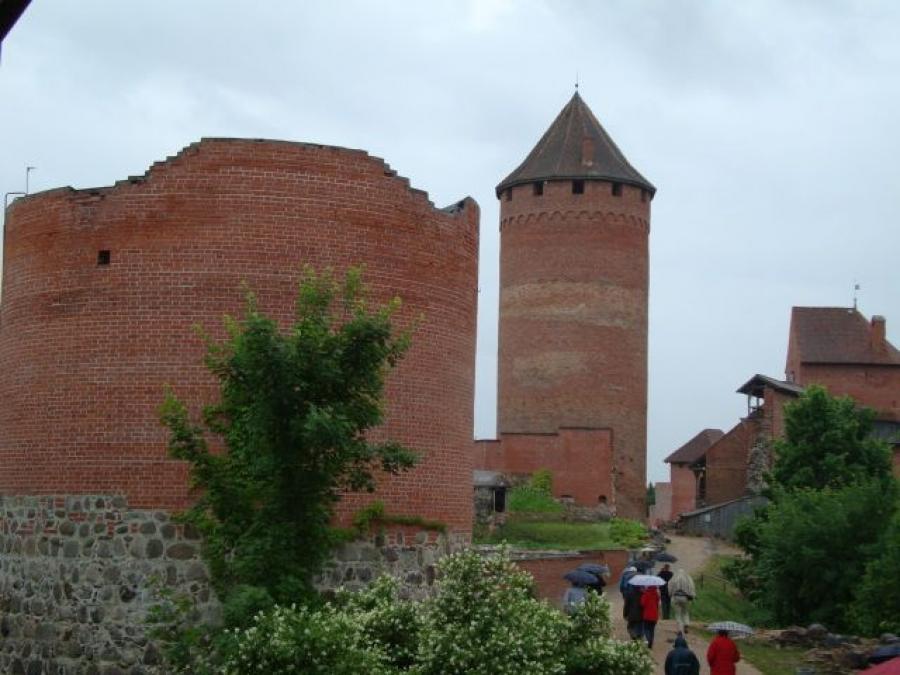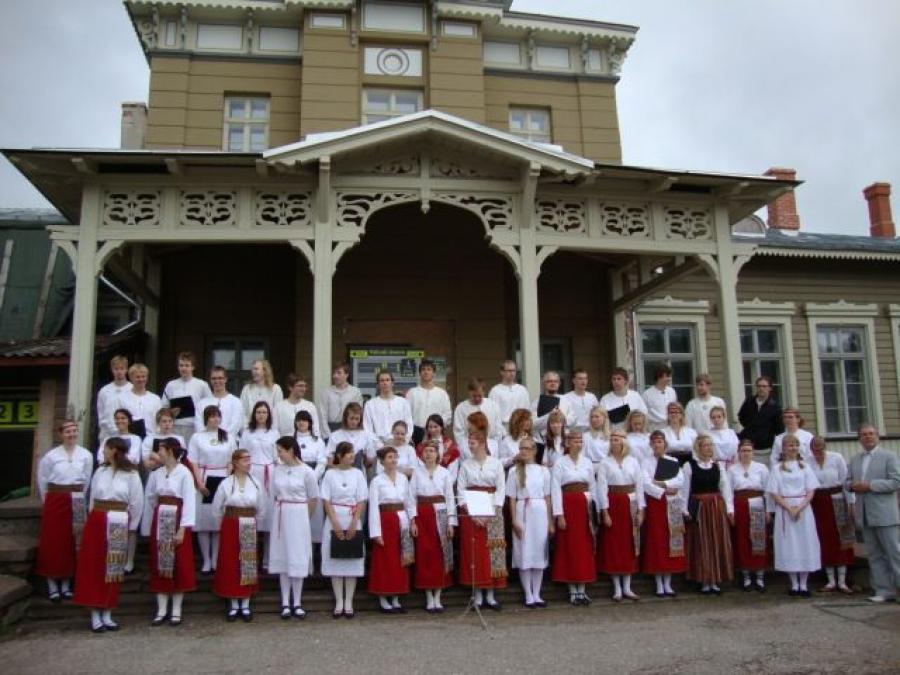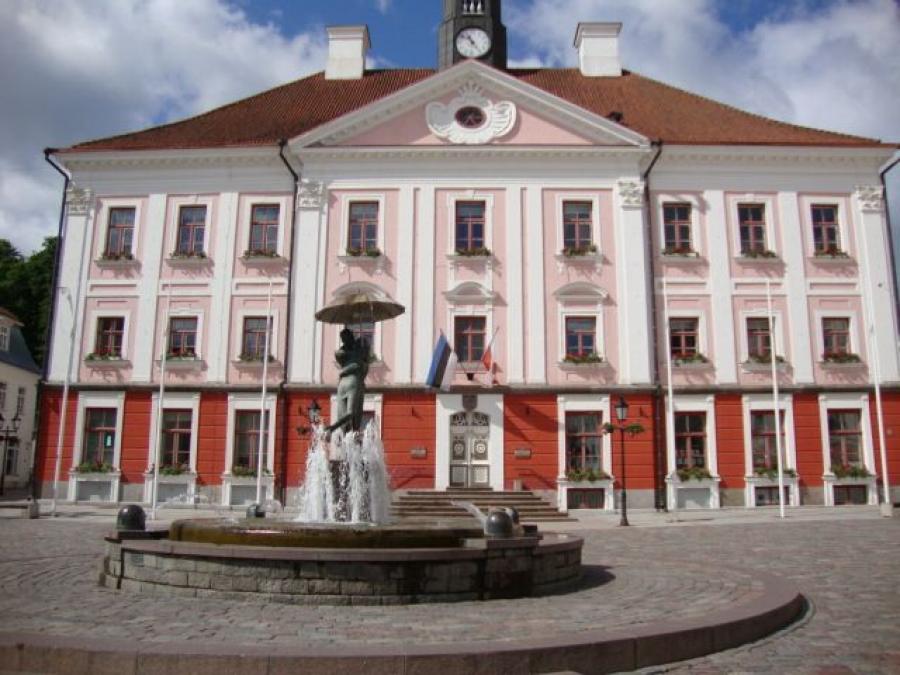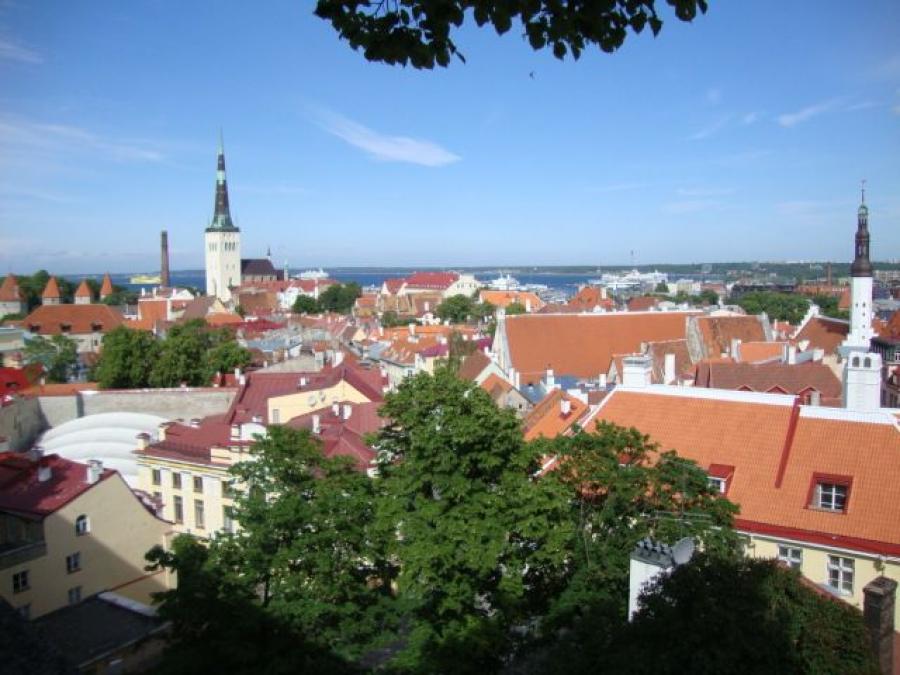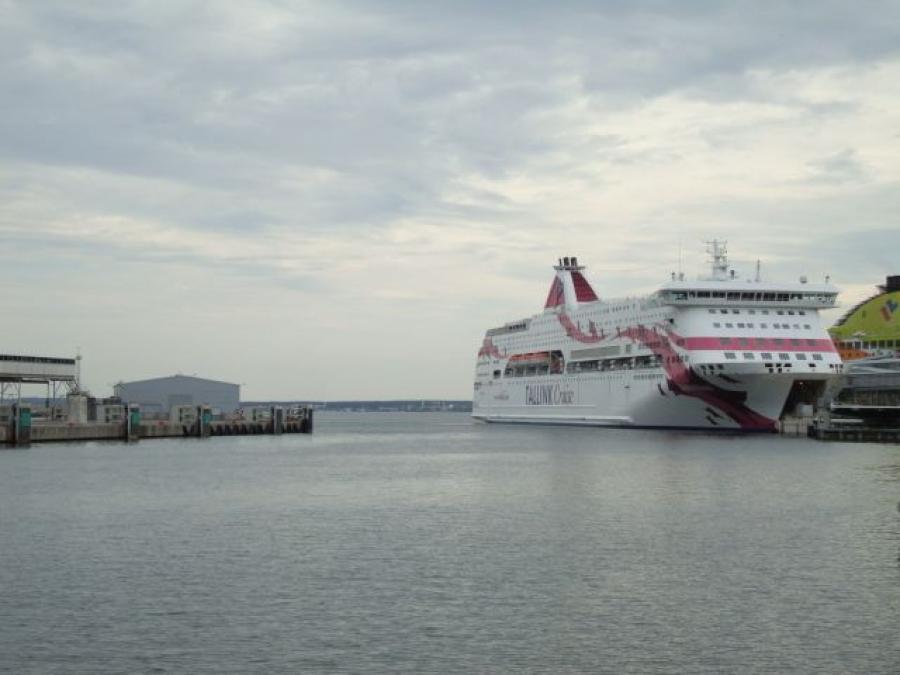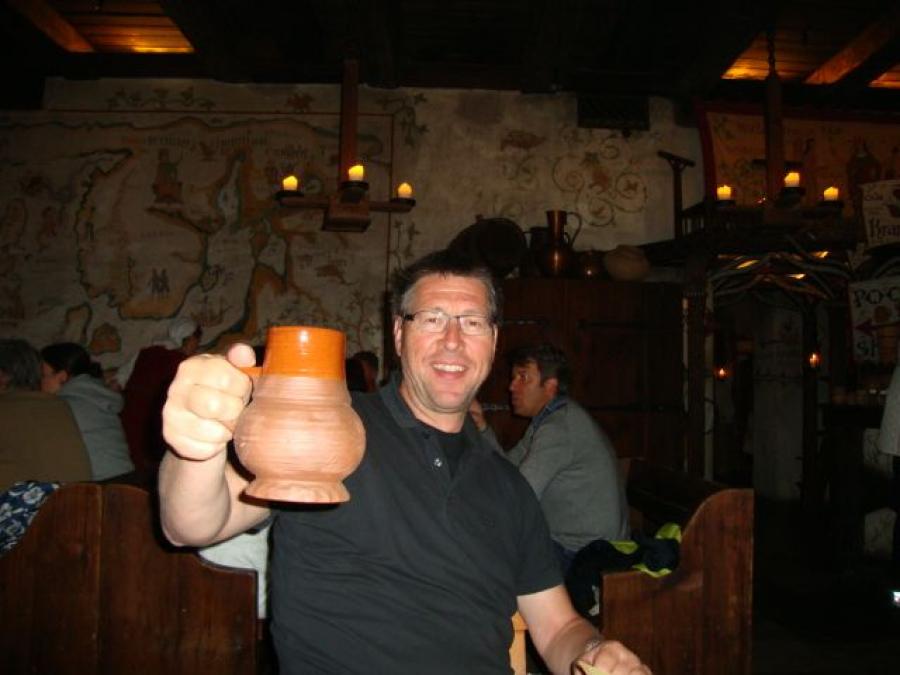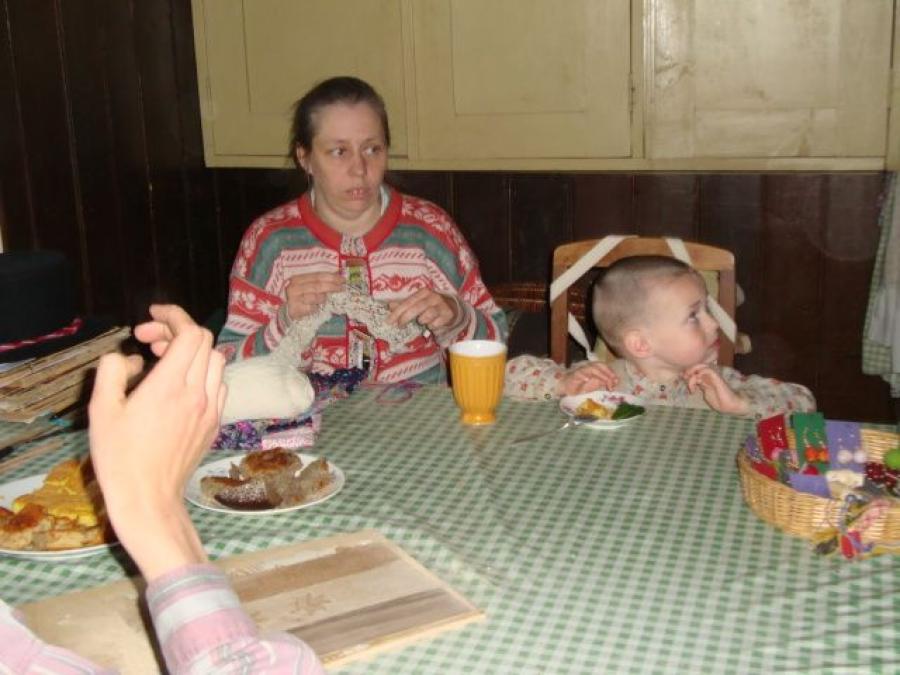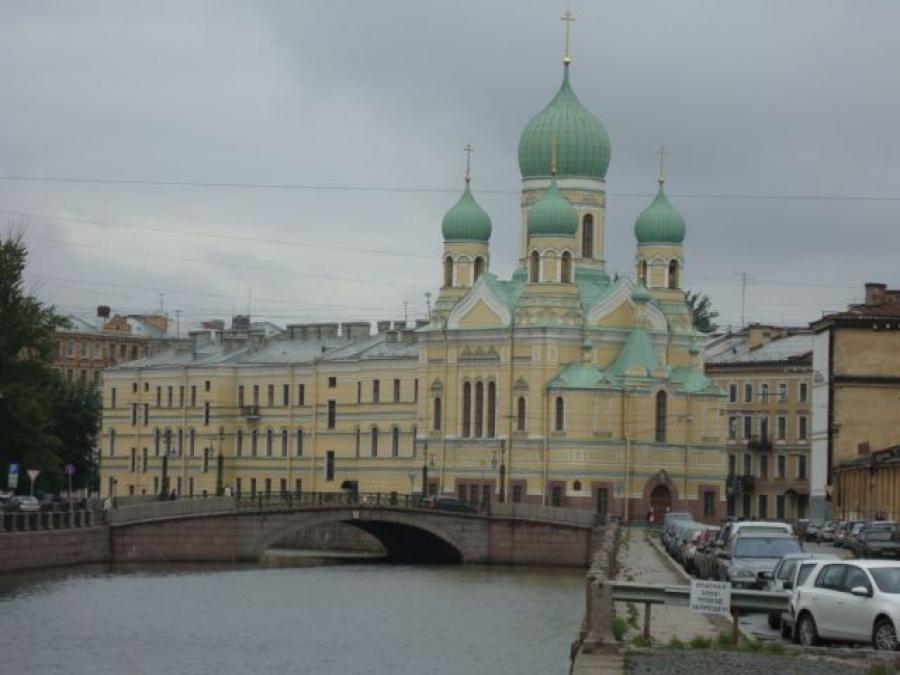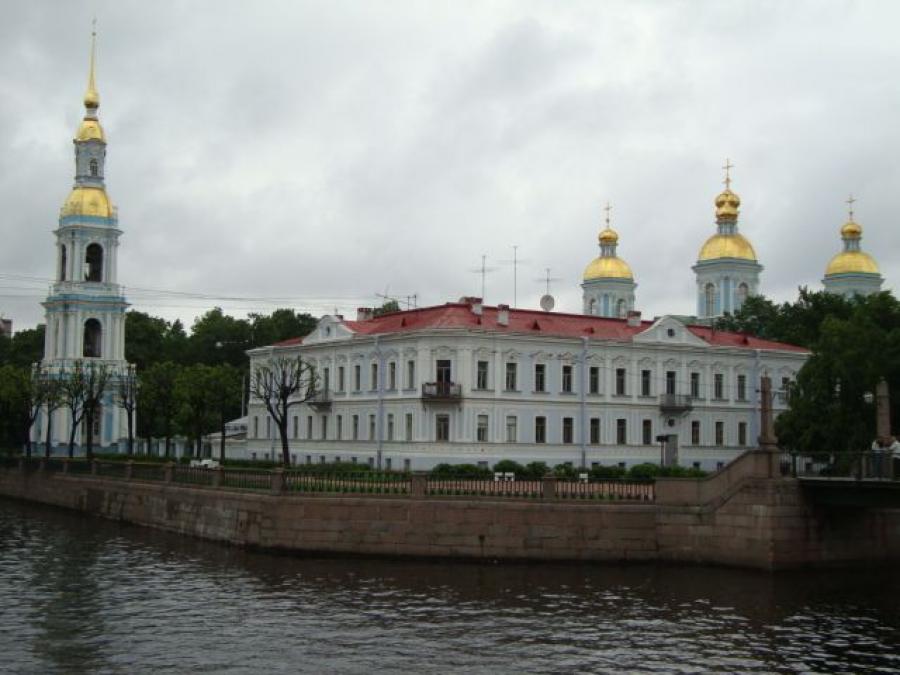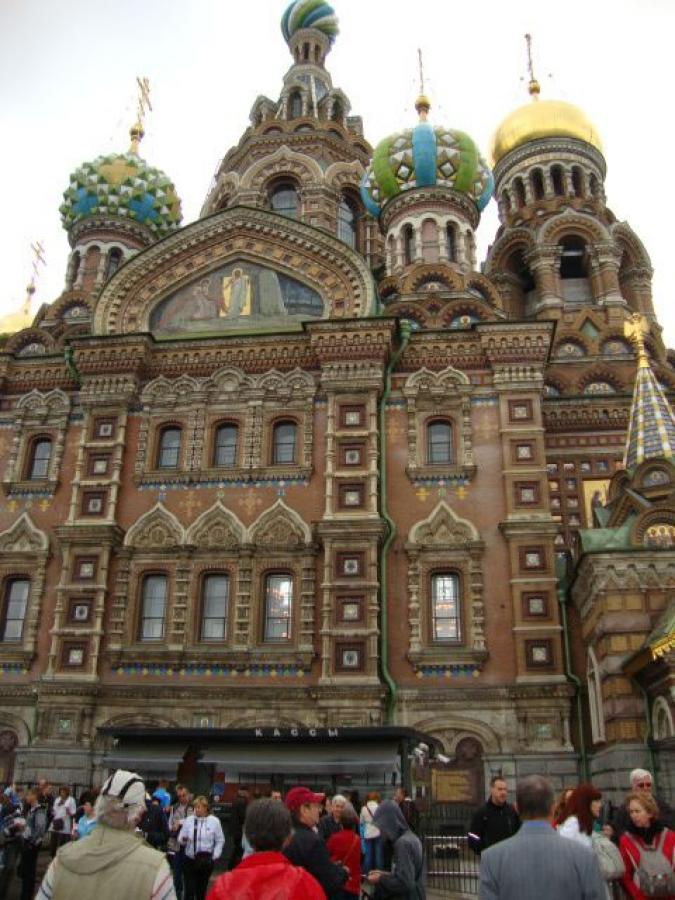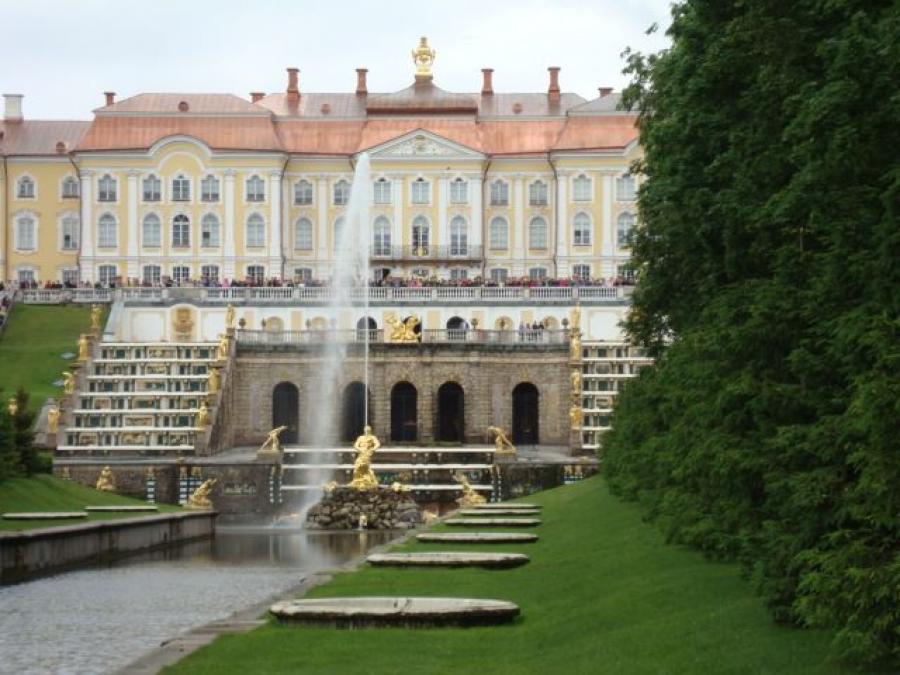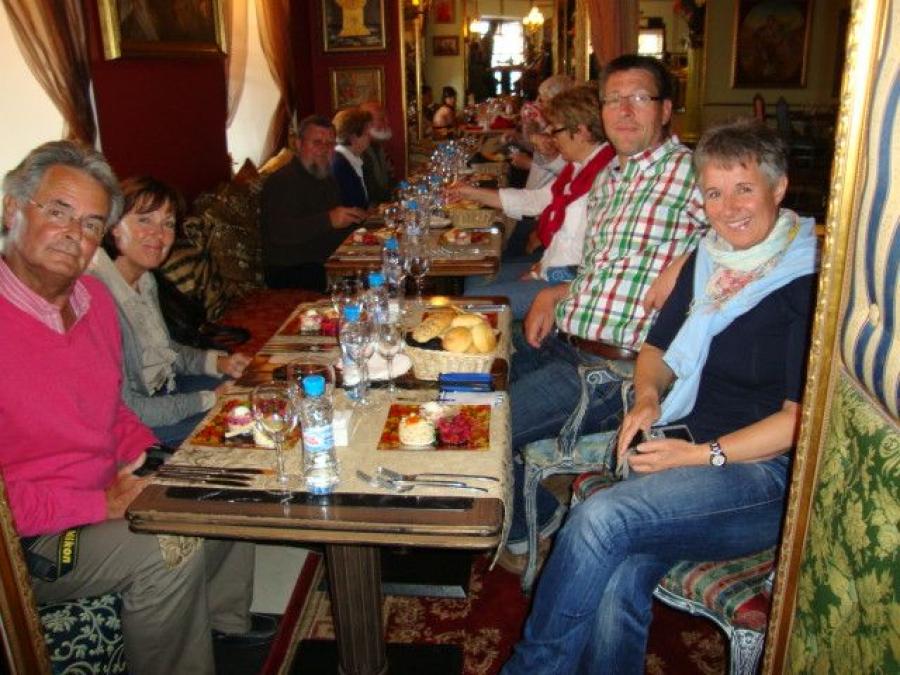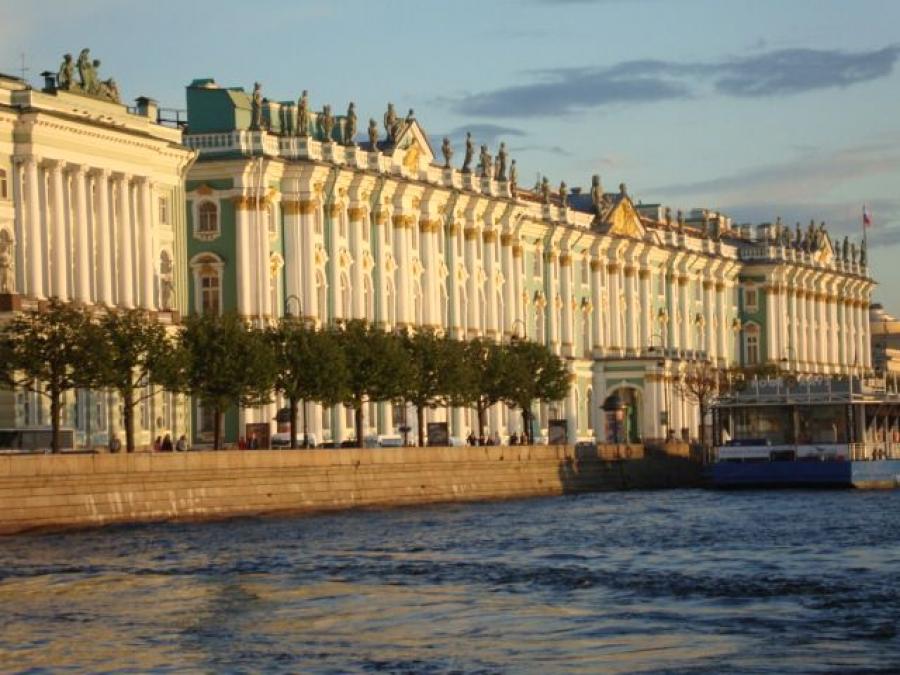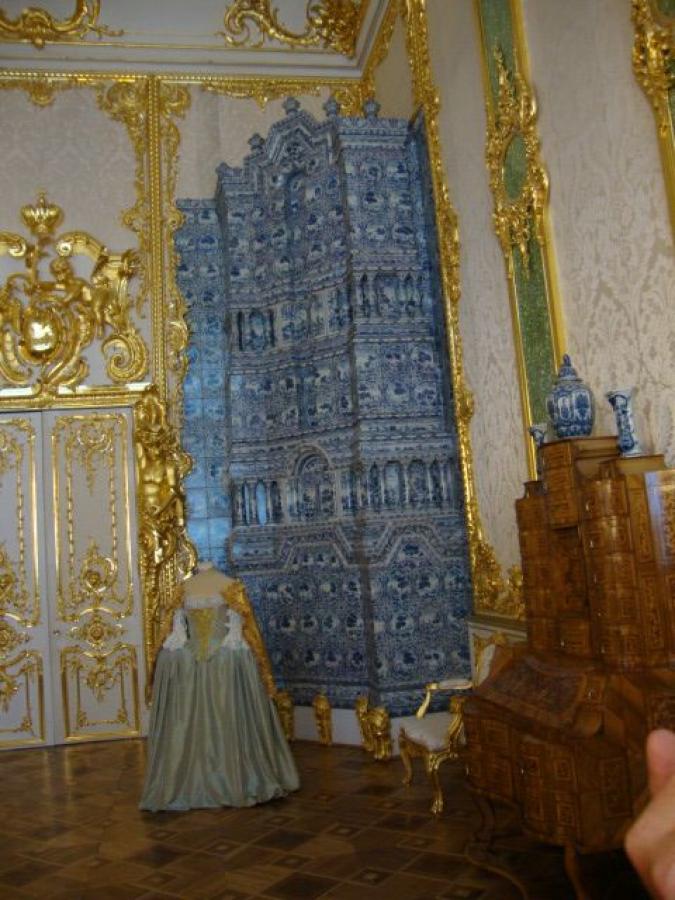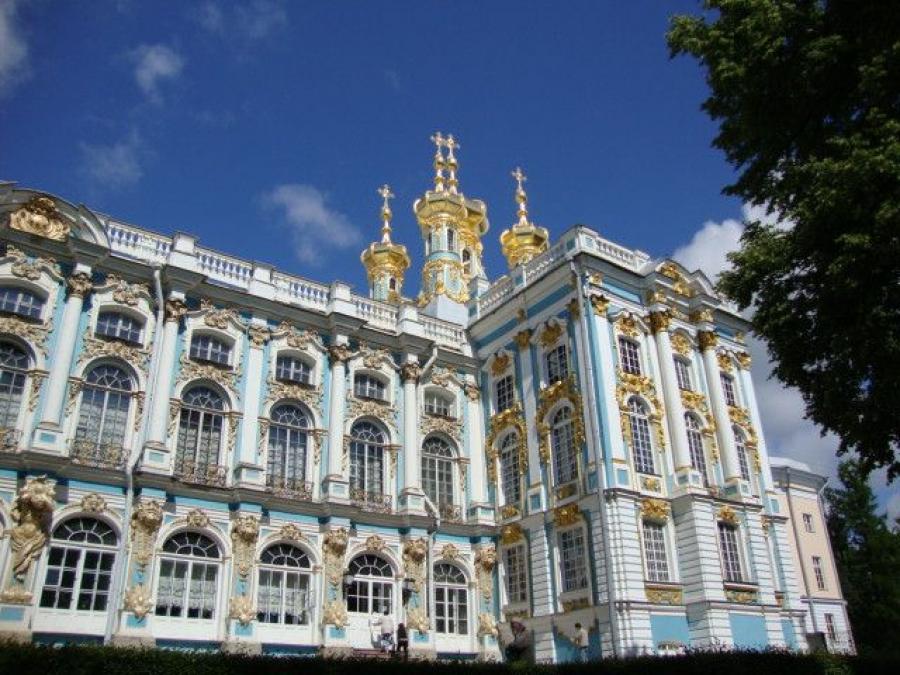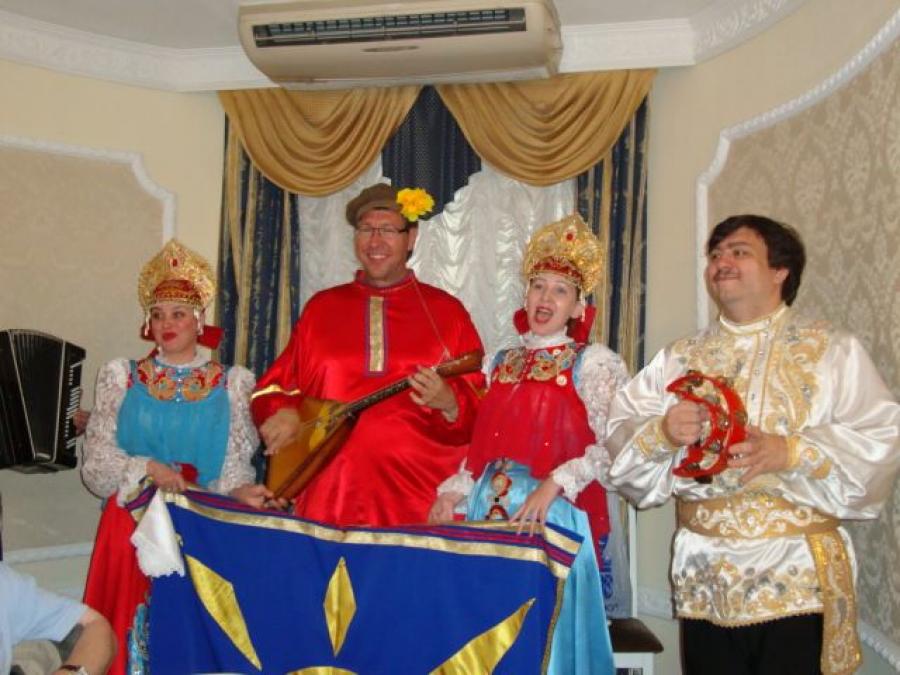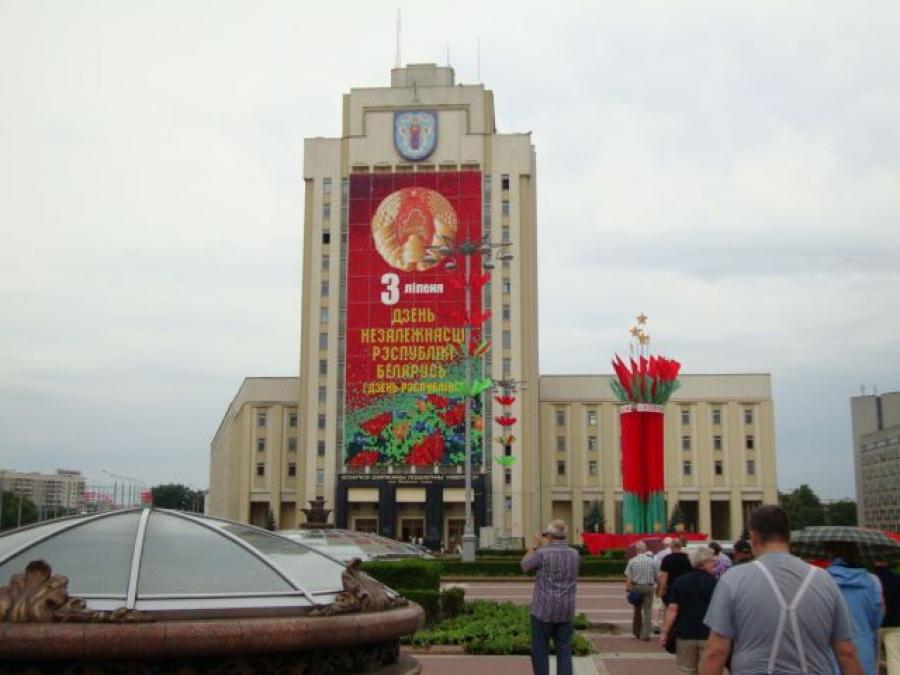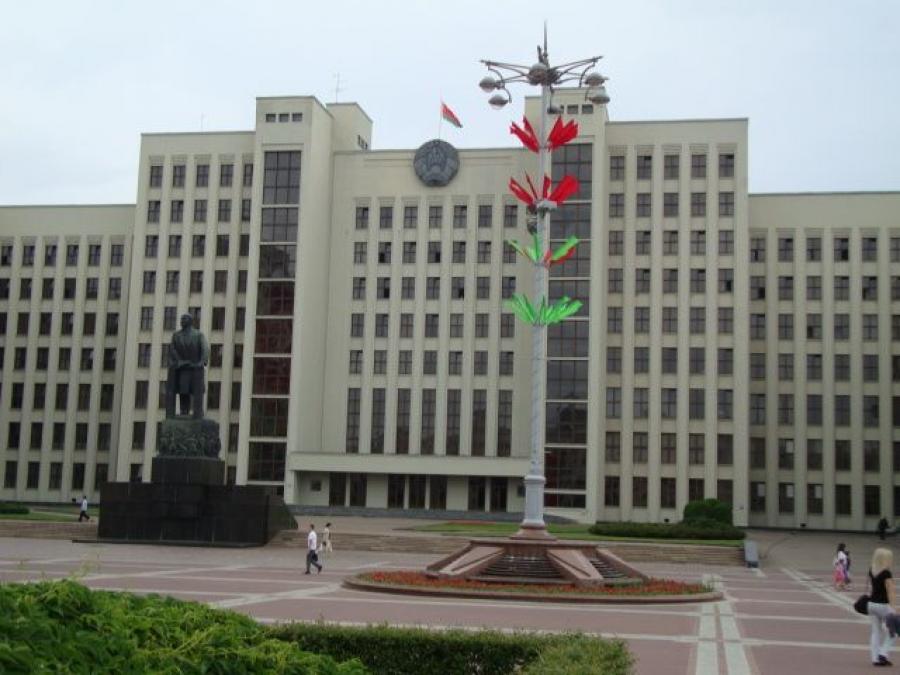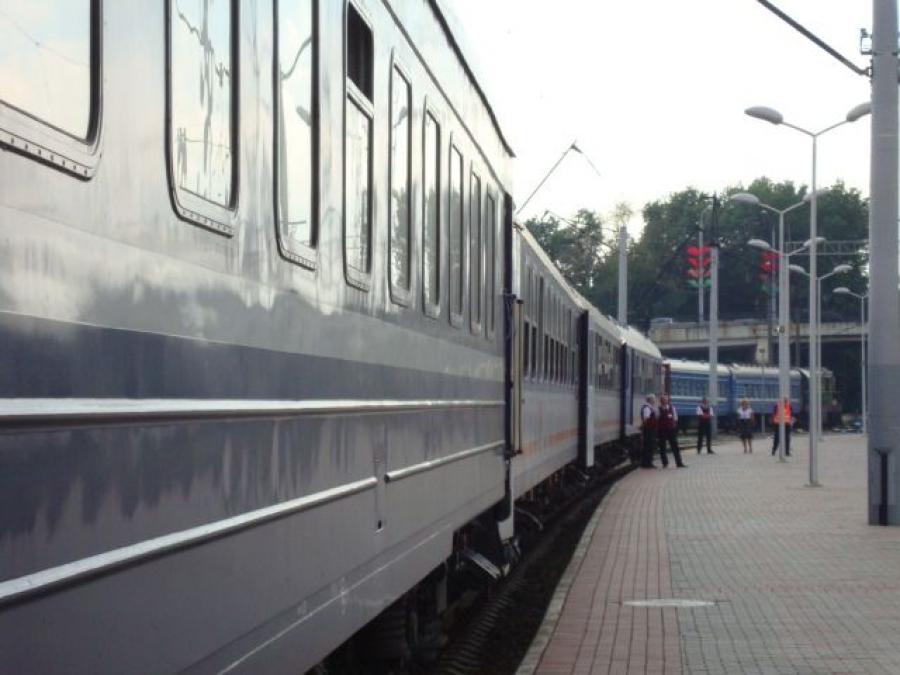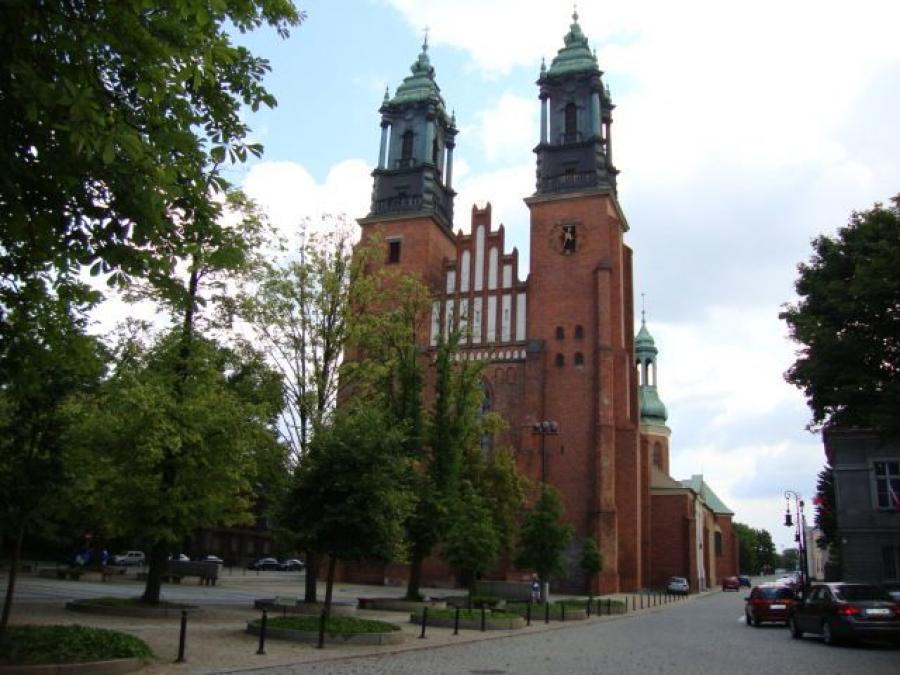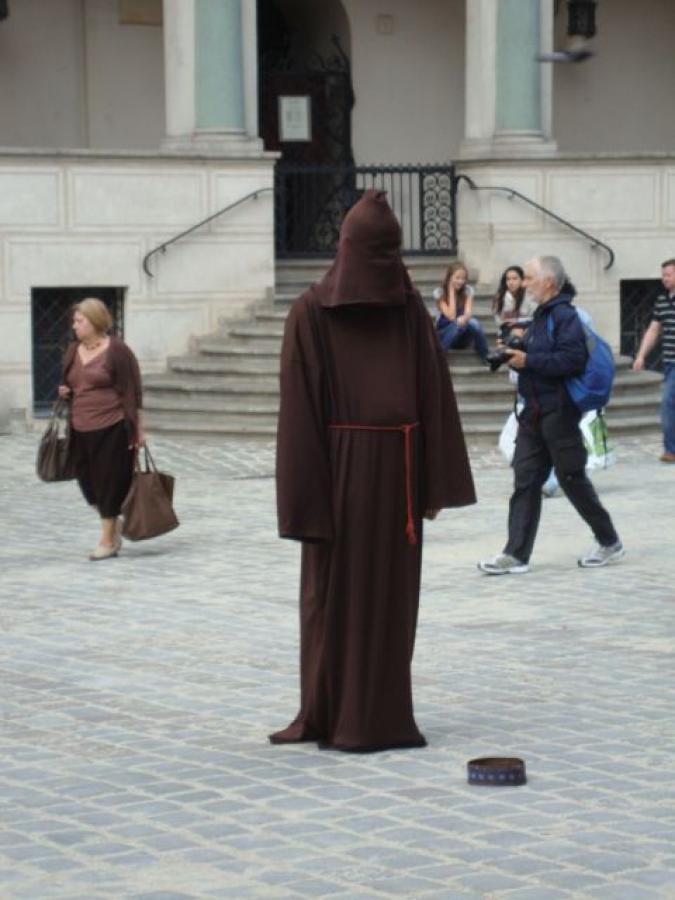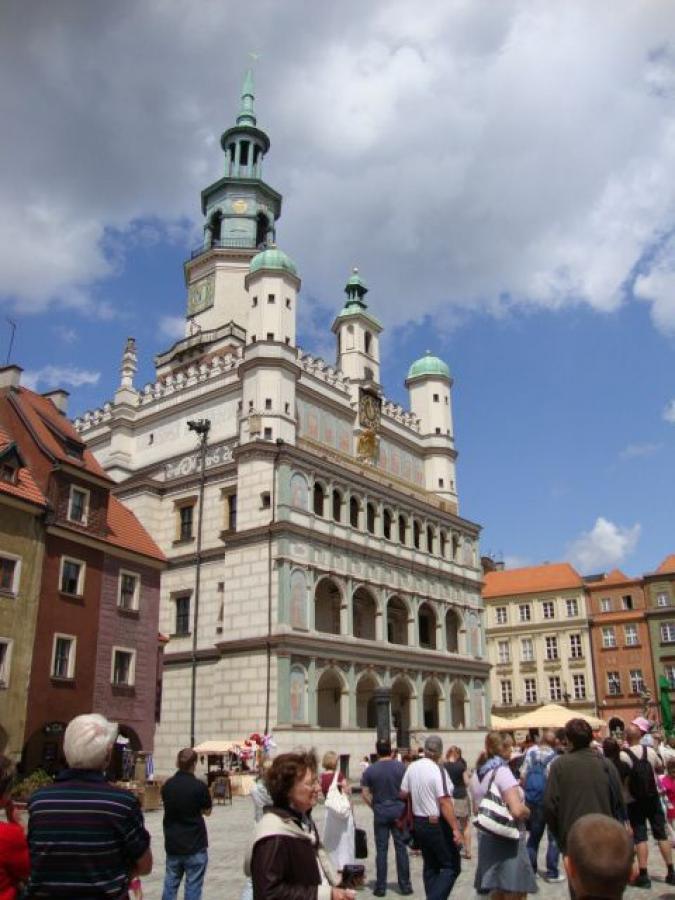Amber Express
Europe - Germany - Eastern Europe - Amber Coast - St. Petersburg
von 10.06.2011 bis 24.06.2011
Autor: Heimo Wallner10.06.2011
BRUCK – BERLIN – RZEPIN
Air Berlin will take us from Salzburg to Berlin in just under an hour, where we will meet up at the Intercity Hotel at Ostbahnhof with the 75 participants of the special train trip Bernstein, organized by Lernidee. Our guide, Agata comes from Gdansk and welcomes us with Polish temperament, friendliness and competence.
In a comfortable coach we leave the capital Berlin, with 3.5 million inhabitants behind us and arrive in Rzepin, where the Polish special train will depart at 11:00 p.m. and our luggage will already be transferred to the individual compartments, each for 2 persons.
For dinner, followed by a walk, the bus will take us to Lagow in 45 minutes, where we will enjoy a pleasant Polish meal in the courtyard of the castle, founded by the Knights of St. John. Starting with an herbal soup, we fortify ourselves with chicken breast, potatoes and salad. The dessert reminds us of our pyre.
Before departure, the restaurant staff welcomes us to the train with vodka and lard bread, herring and pickled cucumbers, and makes sure that we definitely don’t have to spend the first night on the train hungry.
Closing Announcement:
Being the youngest trip participant at 50 years old is an uplifting feeling.
11.06.2011
RZEPIN-GDANSK-MARIENBURG-WROCLAW
The first night in the traveling bedroom is always an adjustment. On the one hand, the rattling of the rails rocks us to sleep, on the other hand, we wake up again and again when a loud screech or twitch makes us think that the train might derail.
With the three famous places Gdansk, Marienburg and Frauenburg we visit sites in Poland that are worth seeing. The old Hanseatic and port city with over 500,000 inhabitants welcomes us with beautiful old houses, most of which were rebuilt after World War II. Three rivers surround the city, of which the Vistula is the longest in Poland with 1062 km.
In Marienburg stands the largest brick castle in the world, founded by the Teutonic Knights and is a UNESCO World Heritage Site. The high and middle chateau covered a construction period of 300 years and a large part was also rebuilt after the war. The day was rounded off with a visit to Frauenburg, located on the fresh lagoon. Already the train ride through dense forests and partly along the sea delighted us. In the cathedral with the baroqueized church we experienced an organ concert. The organist played on one of the most sonorous organs in northern Poland. The most famous personality of Frauenburg is Nicolaus Copernicus, born. 1473, canon and amateur astrologer who worked in Frauenburg for 30 years. Agata serves us Danzinger Goldwasser with 40 revolutions to finish.
She tells us that in their heyday, the Danzingers were so rich that you put gold leaf in the schnapps. Closing Announcement:
We are unanimous in our opinion that we don’t need gold in our schnapps; when we drink schnapps at a late hour in the dining car, the Bordeaux wine tastes better to us.
12.06.2011
Frauenburg-Masuria
Masuria – land of lakes and forests.
Marius, the waiter from the on-board restaurant, serves us ham and cheese for breakfast. The night brought us a lot of rest, since the train did not leave until 4 am. We are already looking forward to our overnight stay at the Mercure Hotel in Mragowo, especially for a long shower. Agata calls it wash day.
The Masuria, a beautiful landscape with forests, about 5000 lakes provided ideal conditions for fishermen and farmers to settle and build villages with their characteristic wooden houses. The name (Mazury) was given to this beautiful piece of land by settlers who immigrated from Mazovia in Poland from the 15th century. The bus takes us in an hour to Mikolaiki, a popular vacation destination on a long Rinn lake and a boat ride lets us admire the untouched nature from the water.
For lunch we had a hearty soup (borsch – beet soup).
In the afternoon we will experience a leisurely punt boat trip on the Krutinna, a natural river that meanders through the landscape in many twists and turns. We experience the silence, the green of the trees and bushes, interrupted by water birds and glide along. Peter’s I-Phone lets us slip into a dreamy mood to classical music by Tchaikovsky.
In the evening, despite the cold temperatures, we can make an outdoor barbeque with typical Masurian folklore. By the open fire and good hearty food we will be introduced to the secrets of bison grass vodka. Conclusion: Tastes very good.
13.06.2011
MASURIA – The Green East of Poland
Restful sleep in the hotel room, a rich breakfast buffet and a sunny day let us get into the bus in a good mood on the way to visit the Wolf’s Lair. This is a huge terrain of 2.5 km2 with several concrete bunkers that had walls up to 6m thick. Built in 1940, it served as Adolf Hitler’s bunker city, the headquarters where he stayed most of the time except for short stays in Berchtesgaden and Berlin. In 1944, Count Stauffenberg attempted to assassinate Hitler in a barracks at Wolfsschanze, but failed. In 1945 the departing Germans blew up all the buildings, so that today only ruins can be seen.
Stork nests are not uncommon in Poland, especially in the Masuria still live many storks. Every year, when they return from the African areas after winter, the male visits the old nest, restores it and waits for a female. Eventually a female joins him and the two start a family for a summer. Storks are not faithful and change their partners every year. Freely according to the motto, first come, first served. Agata always tells interesting anecdotes, among others she told about two female storks that fought and fought with each other in a nest for the male.
Whether this is true, I leave to you. From my own experience I know that tour guides always come up with stories to amuse the guests.
The rest of the day we spend on the train, will cross the border to Belarus in the evening. We leave Poland with its 38 million inhabitants, with a beautiful landscape and an interesting history. In Brest, the wagons are switched to Russian tracks, which are 8 cm wider than the European ones. A process that will take several hours. The idea of unified tracks on the Euro-Asian axis is a pious wish that is unlikely to be fulfilled any time soon. After all, in wartime, the railroad borders could be closed immediately.
Final announcement – KS:
The inner monologue is easy to learn in Poland. You just need to take a certain amount of vodka and it goes by itself.
Do you actually know where the heart of Europe lies? I’ll tell you about it tomorrow.
14.06.2011
Poland-Belarus-Lithuania-Vilnius
Church splendor in Vilnius:
At 6:10 a.m. the Belarusian customs officers wake us up from our sleep in order to check our departure carefully. Even the train bed is folded up to see if anyone is hiding there. We didn’t know that Lampedusa had an impact all the way here. The tour and sightseeing in Vilnius leave many impressions. The city with 1.4 million inhabitants shows a quiet side with 50 churches, mainly Catholic in Baroque style, but also Russian Orthodox buildings and synagogues.
By the way, Lithuanians speak of “Vilnus” (the second i is not pronounced). The old town offers cozy alleys and inviting cafes. Amber accompanies us since 2 days and of course also in Vilnius one store after the other lines up. Lilia, our guide, shows us hand creams, soaps and lotions with amber. We are grateful to her, this is a souvenir of a different kind.
Lunch is typical of the country. There are zeppelinos (dumplings filled with meat in the shape of a zeppelin) and the iced borscht (red beet soup cold with egg and potatoes).
In the afternoon, 30 km outside the capital, we will visit the Trakai Water Castle, the medieval residence of the Lithuanian dukes. Trakai is situated on a peninsula and is the most photogenic castle in the Baltic States. Here lies one of the most beautiful landscapes in Lithuania, with blue shimmering lakes, pine forests and green valleys. We are taken by the untouched nature. The sunny weather with temperatures around 22 degrees rounds off the day.
The heart of Europe is in Lithuania!
19 km north of the capital Vilnius is the exact geographical center of the continent of Europe. What is the Curonian Spit? You will find out tomorrow.
Closing Announcement:
At the university campus we meet students, of which the female ones are very pretty. Maybe an incentive for our Austrian students to do the semester abroad in Vilnius?
15.06.2011
LITHUANIA-KLAIPEDA-KURIAN SPIT
Klaipeda – Palanga – Curonian Spit
During the city tour with Rima, a sympathetic Lithuanian, we learn that the city has 200,000 inhabitants, had economic and military importance in history, has the only ice-free port in the north, 30 million tons of goods are handled there annually, and every fifth inhabitant of Klaipeda earns his money in the port activity. The city has hardly any major architectural monuments, because during the Russian occupation, for example, three large churches in the old town were destroyed. Klaipeda has the largest high-rise building in the Baltic States with 34 floors. Unfortunately, the building has not been occupied until today, because it does not have a fire escape. A well-known contemporary of the city is Simon Dachs, a baroque poet wrote a song – enchanted by the beauty of a seventeen-year-old girl he had seen at a wedding in Königsberg. “Ännchen von Tharau is the one I like, she is my life, my property and my money.” The monument of Ännchen stands in the old town of Klaipeda.
After the drive to Palanga towards the Curonian Spit, we visit Thomas Mann’s summer house and listen to Lithuanian songs performed by a tenor with piano accompaniment. Thomas Mann spent three summers in Nida, working on “Joseph and His Brothers”.
Afterwards we fortify ourselves with Svyturys, the best beer in the world, brewed in Lithuania, and Rima recommends bread with garlic or cheese, both very fatty.
Lithuania’s greatest scenic attraction is the Curonian Spit, a narrow strip of land 98 km long with widths ranging from about 3 km to just 380 meters. Half of it belongs to Lithuania and the other part to Russia. The landscape enchants with dunes, forests and the sea. The highlight is a visit to the large dune, which towers 50-60 meters above the town. The dunes are mighty, sloping straight down to the water and giving you the feeling of being in the Sahara. Due to the wind, they migrate up to half a meter per year.
We are considering renting a cottage next summer, however the fat kitchen today has put us off a bit. The beer was delicious.
The most famous spirit is the liquor with the name “999”. This is a herbal brandy. At 6.00 a.m. we leave Lithuania with our special train and our next destination is Latvia with the capital Riga. I’ll tell you tomorrow whether Latvia will also give us such a warm welcome.
Final announcement today with Thomas Mann’s quote about the Curonian Spit for KS:
“The impression was deep. One finds a surprisingly southern influence. The water of the lagoon is deep blue in summer when the sky is blue. It looks like the Mediterranean Sea. There is a species of pine there, similar to pine trees. The white coast is beautifully curved, one could believe to be in North Africa.
16.06.2011
RIGA-CAPITAL OF LATVIA
The train arrives at the main station in Riga at 8:00 in the morning in sunshine. The capital of Latvia with 700,000 inhabitants, was founded on the right bank of the Daugava River by Bishop Albert from Bremen in 1201. Due to its strategic location between Western Europe and Russia, it developed into an important trade center and was a proud member of the Hanseatic League. A bronze sculpture of the Bremen Town Musicians commemorates the connection with Bremen. For 50 years Latvia, like the other Baltic states, was under Russian domination and achieved independence in 1991. In 2004, all three countries joined the EU.
During the three-hour city tour with Nora, a humorous Latvian, we see many beautiful houses in Art Nouveau style, partly renovated, reminiscent of the Ringstrasse in Vienna. Riga is one of the centers of Art Nouveau in Europe, along with Vienna, Paris and Barcelona.
Most of the sights are located in the Old Town, including Riga’s landmark St. Peter’s Church. The cobblestones are tiring, so a visit to an old pharmacy brings a welcome change and we taste Riga balsam. A black 45% drink mixed from 25 different ingredients and originally made by nuns. Since 1754, this has been the health elixir of Riga. Of course, it can only be used as a medicine, but it can certainly be applied on a daily basis, the likeable Latvian promises us a long life full of health and vitality.
Richard Wagner worked in Riga from 1837 to 1839. He has performed several operas. An old concert hall and a street are dedicated to him.
The magnificently preserved Blackhead House, was the home of the Brotherhood of Unmarried Merchants. Celebrations were held here and Nora suspected that the young merchants were being prepared for marriage. The patron saint was St. Mauritius, who can be seen in a large image at the entrance.
Some skyscrapers in Riga are suitable for watching the sunset. So the Hotel Radisson, with its 27 floors is a good opportunity to do this. A dedicated skyline bar on the 27th floor allows you to watch this recurring but fascinating spectacle alongside a few cocktails.
Whether Latvia will also show its sunny side tomorrow and what we will experience there when we go to Jurmala and Sigulda, we will report next time.
Closing Announcement:
This time, two inscriptions from the Black Head House, which still have their validity today: “Acting contrary to law and conscience, thut turn God’s blessing into a curse!” “The righteous God loves and honors, his family he blesses and increases!”
17.06.2011
RIGA-JÜRMALA-SIGULDA (ESTONIA)
A wise man once said that there is no other subject that is talked about more than the weather. Agathe can certainly tell you a thing or two about it. If she announces in the morning on the bus to the city tour that according to the Internet no rain comes today, and then there is a shower, she gets the statements of the travelers back by return mail. The forecasts are different and there are different opinions and experiences about it. Conclusion: There is no such thing as bad weather, only the wrong clothes.
We can take a walk on the beach in Jürmala in pleasant temperatures, which is good for us. We enjoy the fine sand under our feet. The Baltic Sea has a temperature of 19 degrees.
Jürmala translates as beach and is the spa and seaside resort in Latvia. The 30 km long beach line is also called Latvian Riviera and is a popular seaside resort for guests from Latvia and many other, mainly, Eastern European countries.
The visit of the Gauja National Park with the Ordensburg, we experience in the rain. Here we see the highest elevation of Latvia with 312 m, to which a chair lift leads. A bobsleigh track is operated, where international races are held. Thanks to Nora, we experienced Latvia with many facets and information. Especially Riga has remained in our lasting memory.
Glad, a bit soaked, we get back on the train in the evening. The compartment has already become a bit of our home. The conductor has remade the beds, fresh towels are ready and dinner with wine is served by Juri and his colleague.
During the night we leave Latvia and arrive in Estonia in the morning. What we liked most about Tallinn, I’ll write next time.
Closing Announcement:
It’s not about how others think about me, but how I think about myself.
18.06.2011
TARTU -TALLIN (Estonia)
Tartu and Tallinn:
At the train station in Tartu, a youth choir welcomes us with folk songs in their traditional costumes. Märt Männik, our guide, (Männik translates as pine forest; surnames in Estonia were often named after trees) tells us that once a year the Estonian Song Festival is held in Tartu, where many choirs meet and sing together. All Estonians sing, he says. This has also made historical folk spirit palpable. One could speak of a singing revolution and with their old folk songs the Estonians emphasized their cultural and political independence.
Tartu is Estonia’s second largest city with a population of 100,000 and is known for its university, which was founded in 1632 and today has 15,000 students. Estonia has 1.3 million inhabitants.
The state attaches great importance to the school system and education. Young people are finding good conditions at universities and in many areas they are experiencing a boom. The Internet is popular. Among others, the program for Skype was written by Estonians with financial support from Sweden.
In the afternoon, after a sumptuous lunch on the train, our special train will take us to the capital Tallinn. Tere paevast (Good day), this is how the city guide welcomes us. The Estonians belong to the Finno-Ugric peoples. The language is related to Finnish.
Estonia has the longest coastline in the Baltic States with over 1390 km and has over 1500 islands. Tallinn charms with its compact and well-preserved old town. Only a few cities in Europe still have this uniform cityscape. The city is full of life. Numerous people expect many cozy restaurants and cafes, as well as stores. For centuries the Germans ruled the city they called Reval. Today, 400,000 people live in the capital. The port is an important economic factor.
During dinner at the Blackhead House, an old merchant house from the Hanseatic period, we will be entertained with Estonian folk dances.
During the following stroll we experience the atmosphere of the white nights in the north. The alleys are full of people, everyone is pushing outside and enjoying the time outdoors. At 23.00 we walk in the bright light towards the hotel. We will tell you later what we will experience on our day off in Tallinn tomorrow. Closing Announcement:
The food in the train restaurant is always three, sometimes four courses and always good.
Today’s lunch menu: herring salad, vegetable soup with meat, chicken cutlet with rice and corn, for dessert ice cream and roulade. The tour operator, Die Lernidee from Berlin, provides us with this cuisine culinary to an extent that one can only increase.
19.06.2011
Tallinn – Estonia
Tallinn:
The nights are bright for a long time, only a short time of the night descends and at 5.00 o’clock the sun shines brightly into our hotel room.
We use the time of the morning and after a short breakfast walk along the harbor, which is a large berth for ferries and cruise ships.
Visiting the upper and lower Old Town of Tallinn individually lets us explore new places and perspectives. Visiting a small Orthodox church, we are greeted by a Pope and invited to enter. On our tour we come to a church of which we do not know whether it is Catholic or Protestant. Rather the latter will be the case, since the majority of Estonians with a religious confession are Protestant. Whereas most, at least young Estonians do not have a religious confession. People are streaming into the church and we suspect that a mass or something similar is about to begin. Finally, we experience an hour and a half of prayers in Estonian and a small concert, and as we leave the church we are informed that it is an Olevi community.
In a restaurant decorated in medieval style and lit only by candles, we are served by a maiden in the appropriate attire with herbal beer, nut bread from the oven, dried elk ham and baked cheese with juniper. We wonder if Dominik was also there with his friend during the visit to Tallinn?
After visiting an open-air museum in the afternoon with over 100 wooden houses from different time periods, we leave Tallinn at 8:00 p.m. in drizzle on our special train and head towards Russia.
We leave the Baltic States and look forward to St. Petersburg a highlight of our trip, which we will report on.
What Oleviste Kogudus is for a religious community, we will probably only be able to research at home, or do you know? Closing Announcement:
At the schnapps tonight 2 Bummerl lost and Juri has me the wrong red wine nachgeschenkt. Customs control of the Russians we have in the middle of the night. The only consolation is to drink a glass of water (vodka) and get in the mood for St. Petersburg.
20.06.2011
Tallinn – St. Petersburg
The last section to the destination.
Splendor of the tsars in St. Petersburg:
Arrived in the morning in drizzle in St. Petersburg we immediately notice two things, many people and a lot of traffic. St. Petersburg is booming, thriving and unique. Located on the Neva River, the Russian expanse mixes with Europe’s urban culture. Founded 300 years ago by Peter the Great, the city is blessed with a rich heritage of art, culture and architecture. During our city tour we will see many houses, buildings, palaces in Art Nouveau style, beautiful churches and the landmark of the city, the Admiralty with the golden spire. There would be so much to tell about St. Petersburg, much of it can be read in the popular literature.
In the evening we enjoy a Russian ballet performance at the Marijnski Theater. Next to the Hermitage, the “Marian Theater” is Peterburg’s second cultural flagship with world fame – and not only since Anna Netrebko started her star career here. Russian classical ballet enjoys world fame and, of course, Swan Lake with the wonderful music of Pyotr I. Tchaikovsky cannot be missed. We are enchanted!
The period around the summer solstice from the beginning of June to the middle of July is something like the trademark of St. Petersburg. Due to the northern location, it no longer gets dark at night during this time. Usually the sun shines until midnight. Unfortunately, the cloudy, rainy weather threw a wrench in our plans. Regardless, we enjoy a good dinner after visiting the theater on the 6th floor on the terrace of a restaurant, overlooking the Kazan Cathedral. Radiant heaters and blankets do not let the cold.
The visit to the Hermitage and the boat trip to Peterhof the next day, remind us that we do need a few hours of sleep.
Whether the two major sights of St. Petersburg were rain-free, you will find out in the next entry.
Closing Announcement:
Warm greetings to our fellow traveler who was with us in St. Petersburg 4 years ago. This time we didn’t sit in the orchestra pit for the ballet performance.
21.06.2011
Petersburg – The Venice of the North
St. Petersburg:
During this train trip we stayed one night in the special train and the next night in a hotel. This brought the advantage that we had bathroom and bed every other day. However, each time a small suitcase was packed with the necessary utensils. So it was nice to spend 2 nights in Petersburg in a hotel and have a day without thinking about packing for once.
The Hermitage was once the winter palace of the Tsar dynasty. This overwhelming museum is comparable to the Louvre in Paris, the Prado in Madrid or the “Met” in New York. Catherine II laid the foundation for this large collection. In 1764, she began building the Small Hermitage next to the Winter Palace and enjoyed its art treasures. Today you can admire mainly world-class Western European paintings such as Da Vinci, Picasso and many others. As always, these great buildings with their contents not only we want to visit, but thousands of other people. That is, meandering through and little opportunity to look closer at the paintings. Agathe advises us to make a visit to St. Petersburg from mid-January to the end of April, when you walk alone through the state rooms.
Heimo has already made his own entrance and looked at the Russian major generals and generals described in the book “War and Peace” by Tolstoy.
One trip participant said that the nobles had such pomp around them and the common people were starving. At this point in time, the investments had a sustainable purpose, as many tourists visit the city and leave their money here, which now benefits the general public. The rulers of the time certainly did not have this thought.
4.5 million visitors a year visit the “Russian Versailles”, the Peterhof. Unfortunately, even this one is hopelessly crowded on summer days. Peterhof was founded by Peter I as a pleasure palace in 1704. The garden covers 200 ha with 200 fountains and fountains. Every day at 11:00 you can admire the 20 m high water jet, coming from the mouth of a lion, accompanied by music. The piece of music is the anthem of a great city, composed by Lujer, a composer of Russian origin. During the tour of the gardens, we still had unwanted companions with us, a multitude of mosquitoes.
The individual channels of the park are connected with the Gulf of Finland. During the reign of Peter the Great, ships could sail to the castle.
Peter the Great created paradise on earth with this park, as he himself called it. Dinner in a restaurant with Russian specialties rounded off the day and the subsequent boat trip at 10:30 p.m. through the city in the sunshine fulfilled and compensated us for the rain that kept falling during the last few days. What we will experience tomorrow when we visit the Catherine Palace with the famous Amber Room, and how our trip will continue, we will write to you again.
Closing Announcement:
We didn’t know that either: in St. Petersburg, between 1:30 and 4:30 at night, all the bridges that cross the Neva River and connect the two banks are raised to allow ships to pass. During this time the traffic connections for the cars are interrupted. Fortunately, there will be no more traffic jams.
22.06.2011
St. Petersburg – Catherine Palace
Catherine Palace in Tsarskoye Selo:
In the “Tsar’s Village”, since 1937 the residence is called Pushkin, there is the Catherine Palace, named after Catherine I, wife and successor of Peter the Great. In this palace there is the legendary, reconstructed, Amber Room. The Amber Room was built in 1701 by the Prussian king for Charlottenburg Palace. King William I gave it to Peter the Great in 1716 and received in return 50,000 Russian soldiers, all 2 meters tall, like Peter himself. Peter the Great did not like the Amber Room and it was only moved to the Catherine Palace by his daughter Elizabeth. After the revolution in 1917, the palace was nationalized and a museum was founded. During the Second World War the Catherine Palace was occupied by the troops. 70% of the art treasures were moved out; there was no time for the Amber Room and it was taken to Königsberg by the Germans in 1942. There the traces got lost. It was no longer found. Many stories surround the Amber Room, some people believe that it burned. Others claim that it still exists and evt. can be found.
In 1991, Deutsche Ruhrgas AG donated $3.5 million to rebuild the room. It processed 6 tons of amber and was opened for the 300th anniversary of the city of St. Petersburg. In the amber workshop worked 40 restorers. Visitors can order a miniature for 30,000 euros.
The splendor of the Baroque palace is opulently displayed in the individual state rooms. Agata took us there at 10:00 and chose the time well. The crowd grew larger by the hour, At the subsequent Tsar’s Table we were treated to culinary delights including caviar, blinis and other dishes. To go with it wine and a few glasses of water. The Russian songs, performed by a folklore group, added to the atmosphere, and slowly the cheeks of the tour participants began to redden. As always, tourists are also brought in for amusement, and of course Heimo had to imitate the Russian and did so brilliantly.
In the evening we move back into our compartment for the last 2 nights on the train and look forward to a long night with the already familiar train sounds. After the white nights in St. Petersburg we are sleep-deprived. So the time difference, one hour more, comes in handy.
Tomorrow we will visit Minsk, the capital of Belarus. Our tour guide Mike told us that it is a beautiful, very clean city. Whether this is the case, we will write to you next time.
Closing Announcement:
Drink vodka in a cultured way: Lernidee from Berlin has written a section on vodka drinking in its travel information. I take the liberty of quoting from it:
From a Russian’s point of view, there are two categories of vodka consumers:
1. civilized, 2. alcoholic.
Virtually every foreigner falls into the 2nd category out of ignorance, there are namely, clear rituals to strictly observe if you want to be considered “civilized”.
And this is how it works:
1. provide an additional drink for immediate rinsing (mineral water, juice, beer, in the province also cognac or wine).
2. vodka should be accompanied by a solid snack: anchovies, cucumber, cheese, sausage, etc. (sweets or typical Western party snacks like chips and nuts do not count).
3. vodka is drunk only and exclusively after a toast and only and exclusively together! Nazdarovye!
23.06.2011
MINSK – BELARUS
Minsk – Belarus:
Montezuma’s revenge never caught up with us during this trip, thank God. Instead, a cold virus accompanied us daily with a strong cough, cold and hoarseness. It spread continuously, as the many air-conditioning systems in buses and hotels were the best breeding ground for it. Especially since I don’t know any “normal” air conditioning. They are always set too cold. Yesterday he reached our compartment now at the end of the Amber Journey. I tried whiskey instead of the water, but that didn’t help either. With a sniffy nose I start the tour in Minsk, the capital of Belarus. We passed the border crossing from Russia to Belarus unnoticed during the night. There is an agreement between the two states and there are no border controls. EU citizens require a visa.
Belarus is located in the middle-eastern Europe. It borders Russia to the north and east, Ukraine to the south, Poland to the west, and Lithuania and Latvia to the northwest. Belarus is home to 9.7 million people, 1.8 million of whom live in the capital. Our guide tells us that 90,000 tourists visit the country every year. The city is very clean and offers many parks and green spaces.
A monument by Janka Kupala adorns one of the parks. He was a great Belarusian poet who died in Moscow in 1942 at the age of 60. Kupala means summer solstice in Belarusian and was his stage name.
The typical Russian architecture runs through the individual streets. In a modern building with an observation tower we can see Minsk from above from the 23rd floor.
Belarusians are sports enthusiasts. In 2014, the ice hockey world championship will be held there. This reminds me of the junior tournaments in Zell am See, where children from Belarus always took part. Tomorrow we will experience the last day of our special train trip. How we will fare in Poznan, we will tell you at the end.
Closing Announcement:
For our friends in Zell am See – H:
We tested a good restaurant for your autumn trip to St. Petersburg and had a drink on you.
24.06.2011
MINSK – POSES – BERLIN
This day starts quite early with the classic re-gauging of the wagons and the farewell of the Russian crew including the dining car. Yuri was a good waiter but also a typical Russian who liked to hold out his hand for a tip.
Customs formalities with the Belarusian authorities go smoothly and there are no problems with the Polish authorities when entering the EU.
So from 02:00 in the morning the night’s rest can begin and we are rocked to sleep. The train went to Poznan during these night hours and we reach the destination at 09:55 local time. (-1 h at Belarusian time).
The sightseeing of Poznan takes about 3 hours and is really worth a side trip. Especially the town hall and the market place are worth seeing. Many beautiful old half-timbered houses and old restored buildings, give the city flair and atmosphere. Punctually at 12 o’clock the town hall clock begins to strike and a fanfare opens a funny spectacle.
Above the clock appear 2 billy goats, which run their heads in 12 times and then disappear again in the tower. The billy goats escaped many centuries ago and while the residents were capturing them, they discovered a fire in one of the town’s rooftops. Due to the quick intervention of the population, a larger damage could be avoided. Since that time, the billy goats have been an important part of Poznan.
Fantastic to watch how all the people turn their heads and cameras upwards and pay rapt attention to the spectacle. The town parish church with its illusionistic architecture and baroque interior is also interesting.
The remaining parts of the city will be visited by bus as a sightseeing tour. It should be noted that the guide very idiosyncratically unwinds his tight program without paying attention to the presence of the entire group. So it happens to us that we have to look for a lost guest.
However, this was compensated by the careful work of Agata and so the group was able to reach the platform on time and start the last part of the train journey. Arrival in Rzepin was on time and the buses were on site to take us to Berli to the destination and end point of our trip.
From 17:15 we were back at the East Station and said goodbye to the fellow travelers of our group and the tour guides. By cab we now went to the Hotel Adlon. You don’t treat yourself to anything else! Freshly showered and combed, shaved and groomed, we look forward to dinner at the Lorenz Adlon Restaurant. A tasting menu of the finest class with wine accompaniment and view of the Brandenburg Gate in the pleasant atmosphere of the hotel library, give this trip the worthy conclusion.
Closing Announcement:
We have traveled 7 countries in 14 days by train and bus, had many new impressions, meetings with people, great natural landscapes, cultural and culinary experiences. Some things accompanied us from the beginning of the journey until the end. We never thought we could see butter deer and pullover pigs in the Masuria. You never stop learning. That’s why travel is so important!









